Animal Facts
Protecting Endangered Animal Species: Our Duty
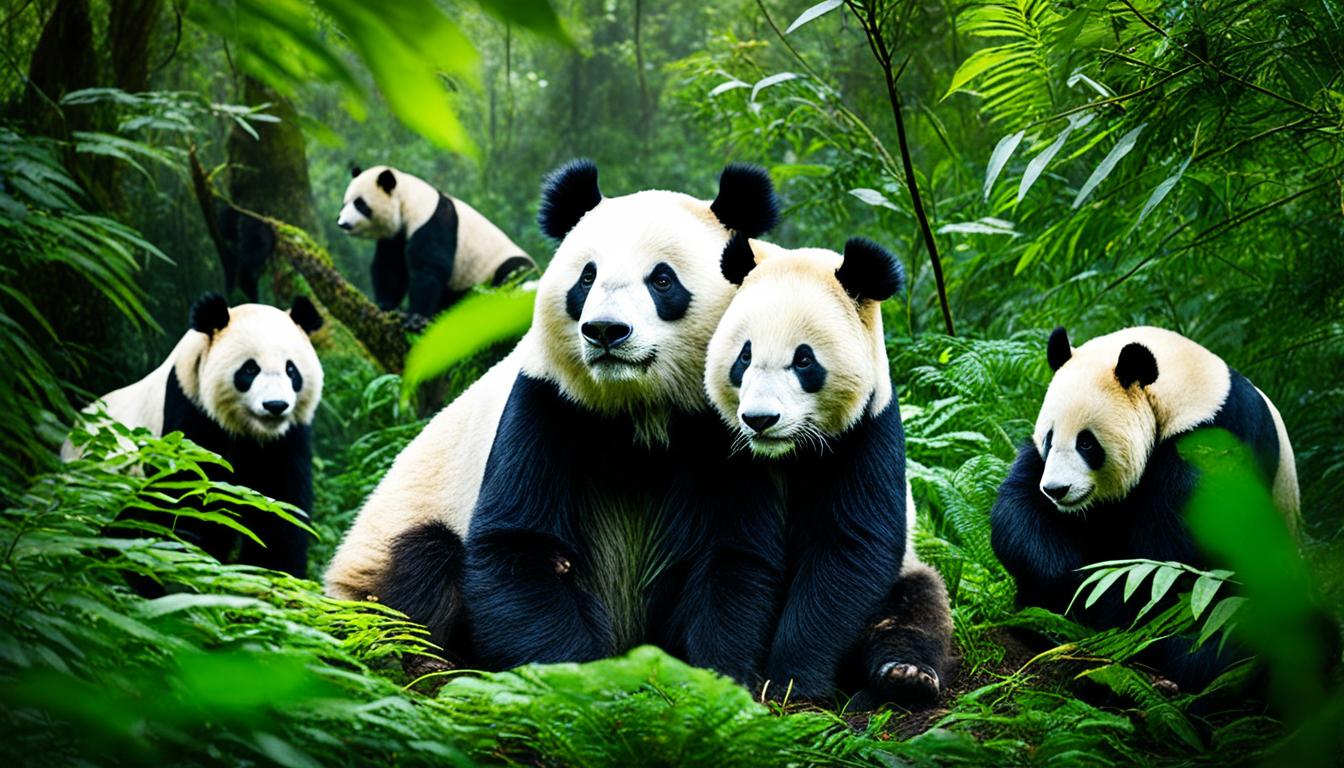
Did you know that the extinction rate of species has significantly increased, putting us in the midst of the planet’s sixth mass extinction? It’s a startling fact that calls for immediate action to protect endangered animal species and preserve biodiversity. As responsible stewards of our planet, it is our duty to safeguard these species and ensure a healthier and more secure future for ecosystems and people.
Key Takeaways:
- Protecting endangered animal species is not just an ethical obligation but a necessity for the health of our planet
- The extinction rate of species has significantly increased, leading to the sixth mass extinction
- Preserving endangered species is crucial for maintaining biodiversity and ensuring the stability of ecosystems
- Our duty to protect endangered species extends beyond our own interests and encompasses the health and stability of the planet
- By taking collective action, we can make a significant difference in preserving endangered animal species and their habitats
Why Should We Protect Endangered Animals?
Endangered species play a vital role in maintaining biodiversity. Each species contributes to the intricate balance of nature, ensuring the health and stability of ecosystems. When species become endangered or go extinct, it disrupts this balance and can have far-reaching effects on other species. Additionally, endangered species can serve as indicators of environmental health, highlighting underlying issues such as habitat destruction, pollution, and climate change. By protecting endangered animals, we safeguard the wellbeing of entire ecosystems.
Endangered animals are not just individual beings struggling for survival; they are integral components of a larger tapestry that sustains the planet. The interconnectedness of different species forms a delicate web of life, where each species plays a unique role. The loss of one species can have cascading effects on others, disrupting the finely tuned balance that has developed over millions of years.
By protecting endangered animals, we are not only safeguarding their future but also preserving the biodiversity and environmental health of our planet.
Conserving endangered species is not solely about protecting individual animals or plants—it is about protecting the intricate complex of relationships and interactions that contribute to a healthy and functioning ecosystem. These ecosystems provide us with clean air, fresh water, fertile soil, and vital resources for our survival and well-being. When we protect endangered animals, we are also protecting ourselves and future generations.
Furthermore, endangered species act as environmental indicators, giving us valuable insights into the health of ecosystems. Their decline or disappearance can signal the presence of deeper underlying issues such as habitat destruction, pollution, or climate change. By paying attention to the plight of endangered animals, we can address the root causes and take action to restore balance and ensure the long-term sustainability of our environment.
Protecting endangered animals is not just a duty; it is an investment in the future of our planet and the generations to come.
The Impact of Endangered Species on Climate Change
Biodiversity plays a crucial role in the fight against climate change. Preserving endangered species is not only essential for the well-being of these individual species but also for the health of our planet as a whole. Biodiverse ecosystems contribute to regulating temperatures, sequestering carbon dioxide, and support the resilience of ecosystems in the face of climate impacts.
When biodiversity is reduced due to habitat destruction or species loss, ecosystems become more vulnerable and compromised. The loss of key species disrupts the natural functions that contribute to climate adaptation and mitigation. Protecting endangered species is, therefore, vital to mitigating climate change and preserving the natural functions that maintain the balance of our ecosystems.
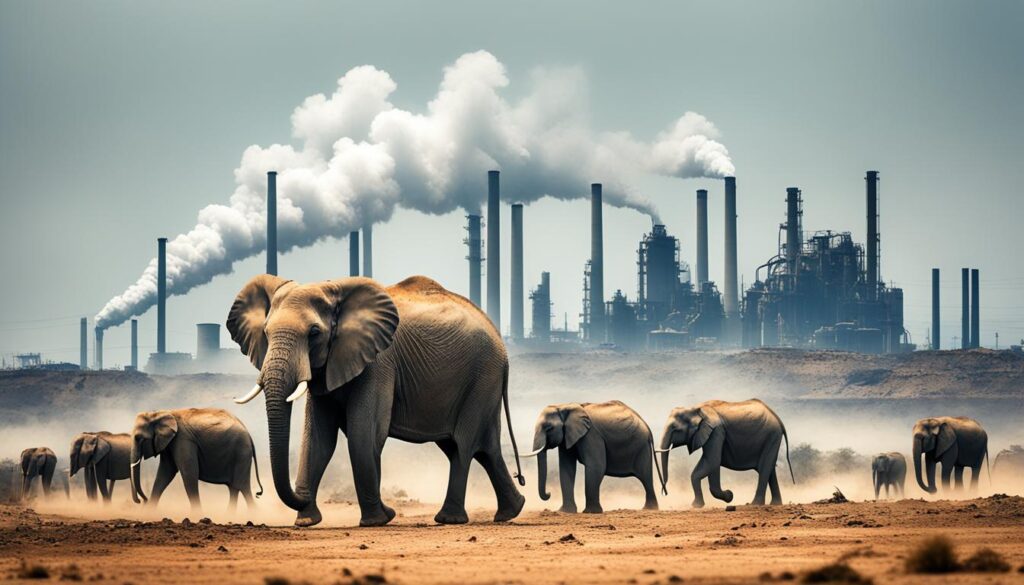
| Natural Functions of Endangered Species in Climate Change Mitigation | Effects of Biodiversity Loss on Climate Change |
|---|---|
| Regulation of temperatures | Decreased resilience to climate impacts |
| Sequestration of carbon dioxide | Reduced carbon storage capacity |
| Enhanced ecosystem resilience | Inability to adapt to changing climate conditions |
| Support for climate adaptation | Disruption of natural climate regulation |
The Role of Endangered Species as Ecosystem Engineers
Some endangered animals serve as “ecosystem engineers,” actively contributing to the protection and maintenance of their environments. Through their feeding behaviors and other ecological roles, these species play a crucial role in creating balance within their habitats and sustaining the intricate food webs that support diverse ecosystems.
For instance, sharks, despite being vulnerable themselves, act as regulators of prey populations in marine ecosystems. Their presence helps maintain the delicate balance of the food webs, preventing the overgrowth of certain prey species and promoting biodiversity.
Elephants, another example of ecosystem engineers, play a vital role in dispersing seeds as they move across their habitats. By consuming fruits and excreting seeds in different locations, elephants contribute to the creation of new habitats and the growth of diverse plant species.
“Sharks and elephants are just a few examples of endangered species that act as ecosystem engineers. By understanding their ecological roles and safeguarding their populations, we can preserve the delicate balance of our habitats and ensure the sustainability of our ecosystems.”
Seals are also instrumental in maintaining balance within marine food webs. They serve as both predators and prey, occupying a unique position in the ecological chain. Their presence contributes to nutrient cycling, as they consume marine organisms and excrete waste on coastal habitats, fertilizing the surrounding environment.
The conservation of these endangered species is of utmost importance in sustaining ecosystems and preserving the delicate balance that supports a wide array of life forms. By protecting the ecosystem engineers, we safeguard habitats, uphold the intricate food webs that maintain biodiversity, and ensure the long-term resilience of our planet.
The Cultural Significance of Endangered Species
Endangered species are not just essential for ecological reasons; they also hold tremendous cultural and traditional significance for many communities around the world. The preservation of these species is vital for safeguarding cultural heritage and traditions that have been deeply intertwined with nature for centuries.
One example of such cultural significance can be seen in the beliefs of the Mazahua people in Mexico. They consider the Monarch butterflies, an endangered species, as the spirits of their departed loved ones. These beautiful creatures play a significant role in their spiritual rituals, symbolizing the connection between life and death.
“The Monarch butterflies are our ancestors, returning to guide us onto our spiritual journey, reminding us of our connection to nature and the cycle of life,” says Maria Hernandez, a Mazahua elder.
Additionally, the African savannah elephants have deep cultural connections with indigenous communities across Africa. These majestic creatures represent wisdom, strength, and a profound connection to their people. They are often central figures in traditional stories, dances, and ceremonies, playing a vital role in preserving cultural identity and passing down ancestral knowledge from one generation to another.
By protecting endangered species like the Monarch butterflies and African savannah elephants, we not only ensure the continuity of valued cultural traditions but also foster a deeper appreciation for the rich biodiversity that surrounds us.
The Cultural Significance: A Source of Unity and Pride
Endangered species are not only biological treasures but also symbols of cultural unity and pride. They unite communities, empowering them to protect their customs, rituals, and shared heritage rooted in the natural world.
Moreover, the conservation of these species provides an opportunity for intergenerational exchange, with elders sharing their traditional knowledge and younger generations gaining a deeper understanding of the connection between culture and the environment.
We must recognize that the cultural significance of endangered species extends beyond their ecological value. Preserving these species is an essential part of preserving cultural diversity and ensuring the passing on of tangible and intangible cultural heritage to future generations.
| Endangered Species | Cultural Significance |
|---|---|
| Monarch butterflies | Viewed as the spirits of the dead by the Mazahua people in Mexico |
| African savannah elephants | Deep cultural connections and symbols of wisdom and connection to indigenous groups |
Human Activities as a Threat to Endangered Species
The sixth mass extinction event is primarily caused by human activities such as habitat destruction, deforestation, pollution, overexploitation, introduction of invasive species, and climate change. These activities have led to widespread biodiversity loss and the decline or extinction of numerous species. It is our responsibility to protect endangered species and the environments they inhabit through behavioral changes, policy changes, and urgent international action.
“The ongoing destruction of habitats and overexploitation of natural resources are threatening the delicate balance of ecosystems and pushing many species to the brink of extinction. It is crucial that we recognize the impact of our actions and work towards sustainable solutions to mitigate the threats faced by endangered species.” – Dr. Rachel Johnson, Wildlife Conservation Scientist
The Impact of Habitat Destruction
Habitat destruction is one of the leading threats to endangered species. As human populations grow and expand, natural habitats are being cleared for agriculture, urban development, and infrastructure projects. This destruction disrupts ecosystems and displaces species, often leading to their decline or extinction. Without intact and diverse habitats, endangered species struggle to find food, shelter, and breeding grounds, further impacting their survival.
Overexploitation and its Consequences
Overexploitation, which includes activities such as hunting, fishing, and illegal trade, poses a significant threat to endangered species. When species are overharvested or poached beyond their reproductive capacity, their populations decline rapidly. Species like elephants, rhinos, and tigers are particularly vulnerable to overexploitation for their ivory, horns, and skins. This unsustainable demand threatens their survival and disrupts ecosystems.
The Role of Climate Change
Climate change, largely caused by human activities, is a major threat to endangered species. Rising temperatures, changing weather patterns, and sea-level rise directly impact the habitats and food sources of many species. From coral bleaching that devastates delicate marine ecosystems to the loss of polar bear habitats due to melting ice, climate change poses a significant risk to biodiversity. Urgent action is needed to reduce greenhouse gas emissions and mitigate the effects of climate change.
The Importance of Awareness and Education
Increasing awareness about the consequences of human activities on endangered species is vital. By educating ourselves and others, we can promote responsible behavior, sustainable practices, and conservation efforts. Engaging in eco-friendly practices, supporting local initiatives, and advocating for stronger environmental policies are essential steps towards protecting endangered species and mitigating the threats they face.
| Human Activities | Impact on Endangered Species |
|---|---|
| Habitat destruction | Displacement and decline |
| Deforestation | Loss of key habitats, disruption of ecosystems |
| Pollution | Contamination of water, air, and soil |
| Overexploitation | Population decline, endangerment, and extinction |
| Introduction of invasive species | Competition and predation on native species |
| Climate change | Habitat loss, disrupted ecosystems, increased extinction risk |
Protecting endangered species requires a collective effort to address the root causes of their decline. It is our duty to prioritize conservation, adopt sustainable practices, and advocate for stronger environmental policies to ensure a brighter future for both endangered species and our planet as a whole.
Taking Action to Protect Endangered Species
As conscious stewards of our environment, we have the power to make a difference in protecting endangered species and preserving biodiversity. Every small action we take collectively contributes to the larger cause of safeguarding these vulnerable animals and their habitats. Here are several impactful ways we can actively protect endangered species:
- Rewilding Gardens: By creating wildlife-friendly gardens, we can provide essential habitats for pollinators and other endangered species. Planting native flowers, shrubs, and trees, and avoiding the use of pesticides, we help create sanctuaries that support biodiversity.
- Participating in Beach Cleanups: Joining community beach cleanup initiatives is an effective way to protect marine species and their habitats. By cleaning up our beaches and coastal areas, we prevent harmful debris from polluting the ocean and endangering wildlife.
- Choosing Eco-Friendly Products: Opting for eco-friendly cleaning products, sustainable household items, and responsibly sourced materials minimizes our ecological footprint. Supporting brands that prioritize environmentally friendly practices helps protect endangered species and their habitats.
- Reducing Meat Consumption: Embracing meat-free dinners or incorporating more plant-based meals into our diet significantly reduces the demand for animal agriculture. This conscious choice helps mitigate habitat destruction, deforestation, and greenhouse gas emissions associated with livestock production, ultimately protecting endangered species.
- Supporting Wildlife Conservation Experts: Contributing to reputable wildlife conservation organizations and supporting the dedicated experts in the field allows us to help protect endangered species more effectively. Financial contributions, volunteering, or participating in awareness campaigns assist in funding essential research, conservation programs, and advocacy efforts.
Our collective efforts to protect endangered species can have a significant impact on preserving biodiversity and ensuring a sustainable future for our planet. By taking these actions, we actively contribute to the conservation efforts aimed at safeguarding these remarkable creatures and the delicate ecosystems they inhabit.
Quote:
“The smallest act of kindness towards an animal is a step towards a better world for all living beings.” – Unknown
| Action | Impact |
|---|---|
| Rewilding Gardens | Provides essential habitats for pollinators and endangered species. |
| Participating in Beach Cleanups | Protects marine species and prevents pollution of coastal habitats. |
| Choosing Eco-Friendly Products | Minimizes environmental impact and supports sustainable practices. |
| Reducing Meat Consumption | Helps mitigate habitat destruction and greenhouse gas emissions. |
| Supporting Wildlife Conservation Experts | Provides valuable resources for research, programs, and advocacy. |
The Importance of Captive Breeding in Species Conservation
Captive breeding programs play a crucial role in the conservation of endangered species. These programs are designed to maintain and revive populations that have lost their natural habitats due to factors such as habitat loss and degradation, climate change, and human activities.
Through captive breeding, animals can be bred in controlled environments, ensuring their survival and preventing their complete extinction. This approach provides a safety net for species at risk and allows for the possibility of reintroducing them to their natural habitats when suitable conditions are restored.
It is important to note that while captive breeding programs offer temporary solutions, they are not a replacement for addressing the root causes of species decline. The continued loss of natural habitats remains a significant threat to endangered species, and comprehensive conservation efforts must tackle issues such as habitat loss, illegal wildlife trade, and unsustainable human practices.
Captive breeding programs are most effective when integrated with wider conservation strategies that prioritize habitat protection and restoration. By addressing the underlying factors contributing to species decline, we can work towards long-term species recovery and the preservation of biodiversity.
The Benefits of Captive Breeding
Captive breeding programs provide several benefits for the conservation of endangered species:
- Population Preservation: By breeding animals in captivity, we can maintain populations and prevent species from going extinct.
- Genetic Diversity: Through careful breeding management, captive programs can help preserve genetic diversity within species, reducing the risk of inbreeding and maintaining healthy populations.
- Education and Research: Captive breeding programs offer opportunities for scientific research and public education, enabling us to learn more about these species and raise awareness about their conservation needs.
It is crucial to prioritize the well-being and ethical treatment of animals involved in captive breeding programs. Stringent regulations and guidelines are in place to ensure the proper care, enrichment, and welfare of captive individuals.

Case Study: Arabian Oryx Conservation
One notable success story of captive breeding is the conservation of the Arabian oryx, a species once classified as extinct in the wild. Through coordinated international efforts and captive breeding programs, the Arabian oryx population has been successfully restored in its native range.
| Year | Wild Population | Captive Population |
|---|---|---|
| 1972 | 0 | 19 |
| 2021 | 2,000+ | Over 7,000 |
“The captive breeding efforts for the Arabian oryx demonstrate that with proper conservation strategies and international collaboration, we can reverse the fortunes of endangered species and restore their populations to healthy levels in the wild.” – Dr. Maria Rodriguez, Wildlife Conservation Society
The Need for International Collaboration in Species Conservation
Protecting endangered species requires international collaboration and cooperation. While international organizations like the International Union for Conservation of Nature (IUCN) play a critical role in bringing attention to species conservation, the real conservation work happens at the national and local levels. It involves dialogue, political will, and implementing effective conservation strategies. By working together, we can address the global threats to biodiversity and ensure the long-term survival of endangered species.
The challenges faced by endangered species transcend borders, requiring a united effort from countries around the world. International collaboration allows us to combine our knowledge, resources, and expertise to implement comprehensive conservation measures. By sharing best practices, research findings, and technological advancements, we can develop more effective strategies for species conservation and environmental protection.
Key Benefits of International Collaboration
- Enhanced Biodiversity Protection: International collaboration enables the conservation of endangered species across their entire range. By coordinating efforts, we can conserve habitats, protect migratory pathways, and implement initiatives that span multiple countries. This integrated approach ensures the long-term viability of species and fosters healthy ecosystems.
- Shared Responsibility: Endangered species are not constrained by national borders. Their survival depends on the collective actions of diverse countries and stakeholders. By fostering international collaboration, we acknowledge our shared responsibility and work collectively towards ensuring the continued existence of endangered species.
- Knowledge Exchange and Capacity Building: Collaboration provides an opportunity for countries to share knowledge, scientific research, and management strategies. This exchange of information facilitates capacity building, allowing countries to enhance their conservation initiatives through shared expertise and learn from successful conservation programs around the world.
- Policy Harmonization: International collaboration helps align conservation policies and frameworks across nations. Through dialogue and negotiation, countries can develop common goals and standards, creating a cohesive approach to species conservation and environmental protection.
- Funding Opportunities: Collaboration opens avenues for greater funding opportunities for species conservation. International partnerships can leverage financial resources from multiple sources, including government grants, philanthropic organizations, and public-private partnerships. This increased funding enables the implementation of larger-scale conservation projects and the development of sustainable solutions.

International collaboration is essential in addressing the complex and interconnected challenges faced by endangered species. It allows us to pool our resources, knowledge, and efforts, maximizing the impact of conservation initiatives. By working together, we can preserve biodiversity, protect ecosystems, and secure a sustainable future for both current and future generations.
The Uncertain Future of Endangered Species
Despite some conservation efforts yielding positive results, the future of endangered species remains uncertain. The relentless forces of habitat loss, climate change, and other detrimental human activities continue to threaten these vulnerable animals. As a result, the risk of extinction looms large, casting a shadow over their survival.
This uncertain future stems from the widespread habitat loss experienced by endangered species. Human activities, such as deforestation, urbanization, and industrialization, have significantly reduced the available habitats for many species. Without suitable habitats, these animals struggle to find food, reproduce, and thrive in their natural environments.
The loss of biodiversity also contributes to the endangered species’ precarious situation. Each species plays a unique role in maintaining the delicate balance of ecosystems. When a species disappears, it disrupts the intricate web of interactions within the ecosystem, potentially leading to cascading effects throughout the food chain and ecosystem function.
Furthermore, the looming threat of climate change exacerbates the challenges faced by endangered species. Rising temperatures, changing weather patterns, and altered habitats directly impact their ability to survive and adapt. The uncertainty of these environmental changes intensifies the risk of extinction for species already on the brink.
Urgent action is crucial to protect and conserve endangered species. Raising awareness about the threats they face is essential in fostering a collective sense of responsibility and inspiring action. Implementing stringent conservation measures, such as habitat restoration, protected areas, and sustainable resource management, can help mitigate habitat loss and provide a lifeline for these species.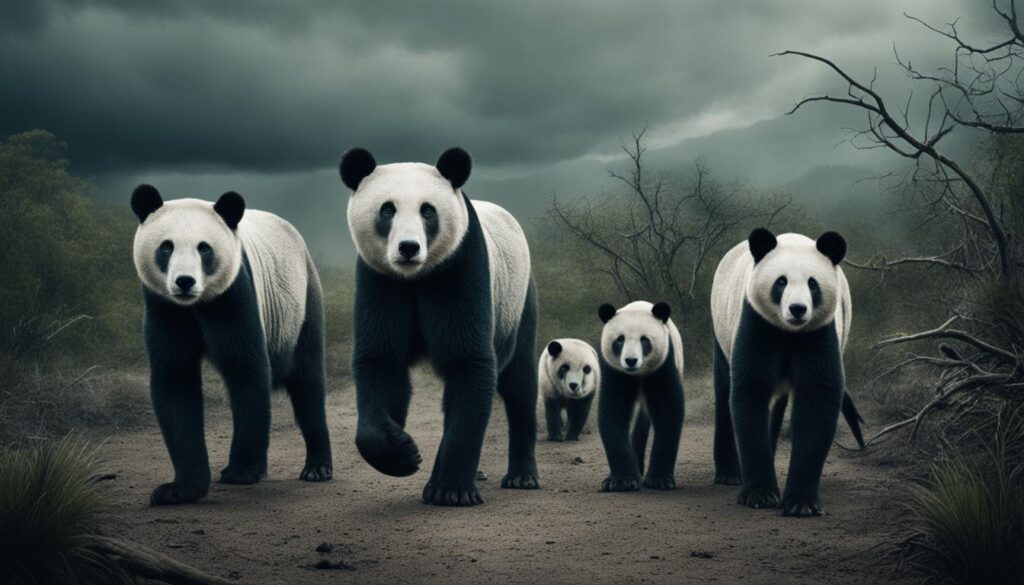
Preserving and restoring wildlife habitats is an invaluable step towards securing the future of endangered species. By safeguarding these habitats, we create safe havens where these animals can thrive, reproduce, and contribute to the overall health and resilience of ecosystems.
The Urgency of Biodiversity Conservation
Biodiversity is the web of life that sustains us all. The loss of species threatens the functionality of ecosystems and compromises our own well-being. It is our duty to protect and conserve endangered species for the sake of our planet and future generations.
Through international cooperation, strict legislation, and sustainable practices, we can address the root causes of habitat loss, reduce the impact of climate change, and minimize the extinction risk faced by endangered species.
Together, we can secure a more certain future for these remarkable creatures and safeguard the irreplaceable biodiversity that enriches our planet.
Making a Difference: How Individuals Can Help
Protecting endangered wildlife is a collective responsibility, and individuals can play an integral role in making a difference. By taking action, we can contribute to the preservation of endangered species and their habitats. Here are some ways you can help:
- Volunteer: Get involved with local zoos or conservation organizations. Volunteer opportunities may include assisting in animal care, participating in habitat restoration projects, or educating the public about endangered species.
- Donate: Support reputable wildlife conservation efforts with financial contributions. Your donations can help fund vital research, habitat protection initiatives, and conservation projects aimed at safeguarding endangered wildlife.
- Raise Awareness: Participate in awareness campaigns to educate others about the importance of protecting endangered species. Share information on social media, organize community events, or give presentations at schools and organizations to spread the word.
- Support Environmental Policies: Advocate for policies that prioritize environmental protection and conservation. Stay informed about local and national initiatives, contact legislators, and join organizations working towards sustainable practices and wildlife conservation.
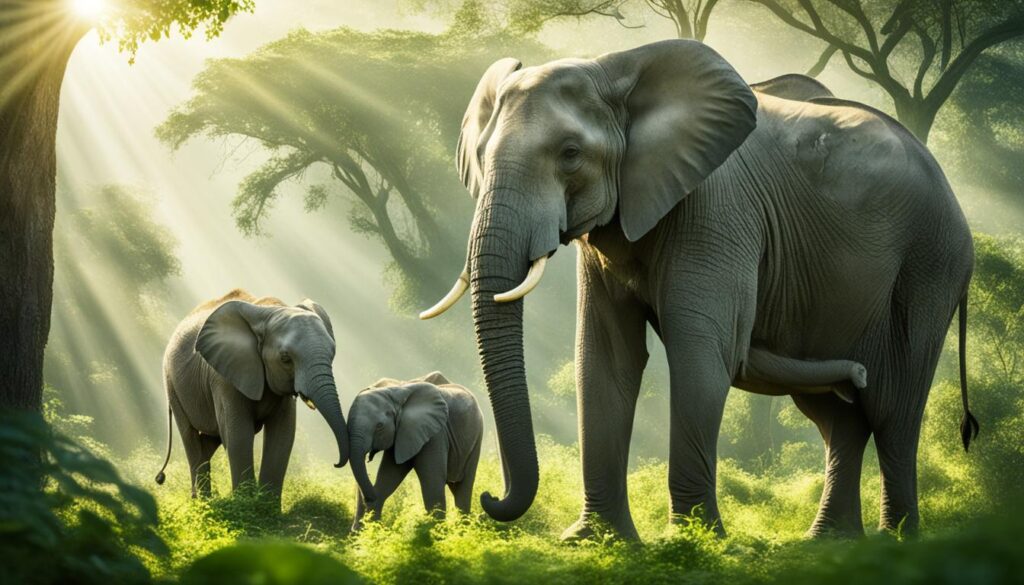
The Ethical Duty to Protect Endangered Species
The preservation of endangered species is not merely a choice; it is an ethical duty that stems from our understanding of the intrinsic value of all living beings and the interconnectedness of ecosystems. Endangered species hold inherent worth and contribute to the delicate balance of biodiversity, which is essential for maintaining the health and stability of our planet.
Our duty to protect endangered species extends beyond human interests and encompasses the preservation of the natural world as a whole. By conserving these species and their habitats, we ensure the continuation of vital ecological processes and the well-being of countless other organisms that rely on them.
“The ethical duty to protect endangered species is grounded in our recognition that every living being deserves respect and has a right to exist.”
The Intrinsic Value of Endangered Species
Endangered species possess inherent value, independent of their utilitarian or economic significance to humans. Each species represents a unique evolutionary heritage, contributing to the richness and complexity of life on Earth. When a species teeters on the brink of extinction, a vital part of our planet’s natural history and diversity is at risk of being forever lost.
The Preservation of Biodiversity
Protecting endangered species is essential for preserving biodiversity, which is the foundation of healthy ecosystems. Biodiversity increases ecosystem resilience, enhances ecosystem services, and promotes stability in the face of environmental changes. By safeguarding endangered species, we safeguard the intricate web of life that supports us all.
The Conservation of Ecosystems
Endangered species serve as integral components of ecosystems, contributing to their proper functioning and stability. Each species plays a unique role in maintaining ecological balance, such as pollination, seed dispersal, and predator-prey relationships. When these species decline or disappear, the delicate equilibrium of ecosystems is disrupted, leading to cascading effects on other species and ecological processes. Conserving endangered species ensures the preservation of healthy and functioning ecosystems.
The Maintenance of Planet’s Health and Stability
Endangered species, as indicators of ecosystem health, serve as a barometer for the overall well-being of our planet. Their decline or disappearance often signifies underlying issues such as habitat destruction, pollution, and climate change. By protecting endangered species, we address these root causes and strive toward a more sustainable future for both the natural world and ourselves.
| Benefits of Protecting Endangered Species | Threats to Consider |
|---|---|
| Preservation of biodiversity | Habitat destruction |
| Maintenance of ecosystem balance | Climate change |
| Promotion of ecological resilience | Overexploitation |
| Indication of environmental health | Invasive species |
The preservation and conservation of endangered species should be viewed as our moral obligation—an ethical duty to protect the remarkable diversity of life on Earth and safeguard the future of our planet.
The Role of Science and Research in Species Conservation
Science and research are integral components of successful species conservation efforts. Through rigorous scientific studies, we gain a deeper understanding of the threats that endangered species face, enabling us to develop effective conservation strategies and monitor the progress of our conservation efforts.
Research plays a pivotal role in informing policy decisions related to species conservation. By examining data and empirical evidence, policymakers can make well-informed choices that prioritize the protection and preservation of endangered species. Scientific research also helps raise awareness among the general public about the urgent need for species conservation.
Furthermore, research acts as a catalyst for mobilizing resources and support for species conservation. When we uncover new findings and discoveries through scientific studies, it creates a sense of urgency and inspires individuals, organizations, and governments to take action in protecting endangered species.
“Scientific research is essential in understanding the complex dynamics of ecosystems and the impacts of human activities on endangered species. It provides the foundation for designing effective conservation programs and policies, ensuring a sustainable future for biodiversity.”
Collaboration is key in leveraging the power of science and research to conserve endangered species. Scientists, conservationists, and policymakers must work hand in hand, sharing expertise and knowledge to achieve meaningful conservation outcomes. Through collaboration, we can bridge the gap between research and implementation, translating scientific findings into practical conservation measures that have a positive impact on endangered species.
The Role of Science and Research in Species Conservation:
| Scientific Research | Conservation Strategies | Monitoring Success |
|---|---|---|
| Provides understanding of threats to endangered species | Develops effective conservation strategies | Evaluates the progress of conservation efforts |
| Informs policy decisions | Inspires public awareness and support | Mobilizes resources for conservation |
| Facilitates collaboration between scientists, conservationists, and policymakers | Translates research findings into practical measures | Achieves meaningful conservation outcomes |
By harnessing the power of science and research, we can drive informed decision-making, raise awareness, and implement effective conservation strategies. Together, let us prioritize the role of science in species conservation and ensure a sustainable future for our precious biodiversity.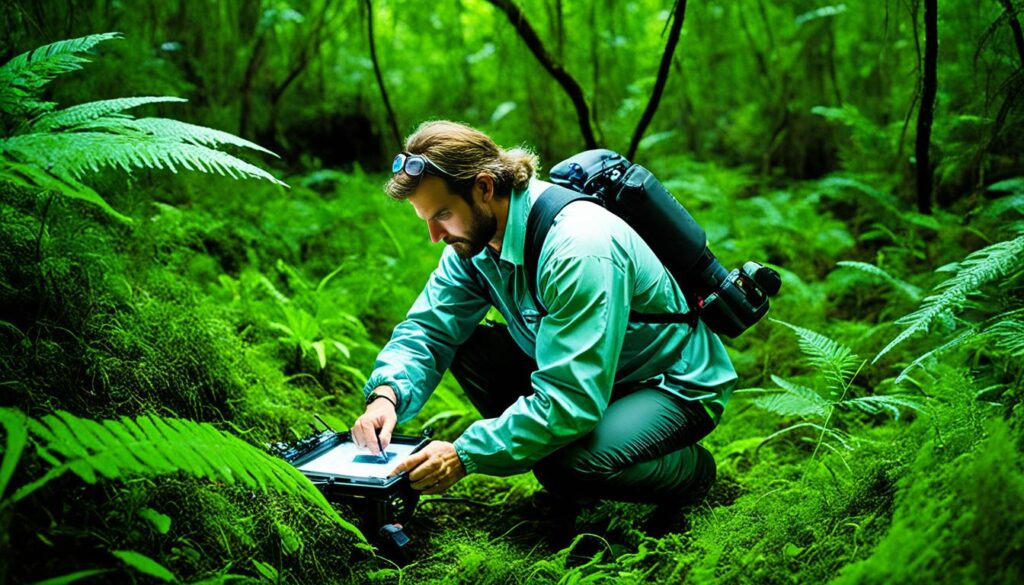
Conclusion
Protecting endangered animal species is not just a moral duty but a necessity for the health and well-being of our planet. The conservation and preservation of biodiversity ensure the long-term survival of ecosystems and the sustainability of our planet.
By taking individual and collective action, we can make a significant difference in protecting endangered species and ensuring a brighter future for generations to come. It is our duty to act now and prioritize the preservation of endangered animal species.
Together, we can create a world where endangered species thrive and contribute to the rich tapestry of life on Earth. Let us join forces, advocate for change, and actively work towards the protection and preservation of these magnificent creatures. The time to act is now.FAQ
Why is protecting endangered animals important?
How do endangered species impact climate change?
What is the role of endangered species as ecosystem engineers?
Do endangered species hold cultural significance?
What are the human activities threatening endangered species?
How can individuals help protect endangered species?
How does captive breeding help endangered species conservation?
Why is international collaboration important in species conservation?
What is the future of endangered species?
How can individuals make a difference in protecting endangered wildlife?
Why is there an ethical duty to protect endangered species?
What is the role of science and research in species conservation?
How Can Protecting Endangered Species Relate to Keeping Pets Safe in Hot Weather?
Protecting endangered species and keeping pets safe in hot weather go hand in hand. By following hot weather pet safety tips, such as providing shade and water, we can protect our pets from heat-related illnesses. Conserving wildlife habitats also ensures the survival of diverse species, creating a balanced ecosystem for all creatures.
Source Links
- https://dailyorange.com/2017/10/saving-endangered-animals-duty-humans/
- https://mountainscholar.org/bitstream/handle/10217/37602/Duties_to_Endangered_Species.pdf
- https://www.ifaw.org/journal/why-should-we-protect-endangered-animals
Dana is our Lead Content Writer, bringing a wealth of knowledge and expertise to our team. With a background deeply rooted in animal studies and a profound love for all creatures, Dana is dedicated to crafting engaging and informative content that resonates with our audience. With Dana at the helm, you can trust that our content is accurate and engaging, catering to the diverse interests of animal enthusiasts everywhere.
Animal Facts
Discover Animals in Cuba: A Biodiversity Tour

Did you know that Cuba is home to over 6,000 known animal species? From vibrant birds to elusive reptiles, this Caribbean island boasts a remarkable level of biodiversity that rivals some of the world’s most renowned wildlife destinations. Exploring the animal kingdom in Cuba is not just an adventure; it’s an opportunity to witness the wonders of nature up close and personal.
Key Takeaways:
- Cuba is home to over 6,000 known animal species, making it a biodiversity hotspot.
- Exploring the wildlife in Cuba offers a unique opportunity to witness the wonders of nature.
- Birdwatching, sea turtle nesting, and marine life observation are popular activities in Cuba.
- Cuba’s commitment to environmental conservation ensures the preservation of its pristine landscapes.
- Joining a nature tour in Cuba allows travelers to immerse themselves in the rich natural beauty of the country.
The Pristine Landscapes of Cuba
Cuba is renowned for its pristine landscapes, which encompass a variety of ecosystems ranging from lush rainforests to breathtaking coastal areas. These untouched natural habitats provide a safe haven for a diverse array of wildlife, making Cuba an oasis for nature enthusiasts.
One of the most extraordinary examples of Cuba’s pristine landscapes is the Zapata Peninsula. This UNESCO Biosphere Reserve is a treasure trove of biodiversity, boasting an abundance of bird species, amphibians, and reptiles. As you explore this remarkable peninsula, you’ll be in awe of the thriving wildlife that calls it home.
In addition to the Zapata Peninsula, Cuba offers numerous other protected areas and national parks where you can immerse yourself in the untouched beauty of the island. From the Sierra Maestra mountains to the idyllic beaches of Cayo Coco, each destination brings its own unique charm and pristine landscape.
“Cuba’s pristine landscapes are a testament to the country’s commitment to environmental conservation. By preserving these natural habitats, Cuba offers a unique opportunity for visitors to experience the beauty of wildlife in its purest form.”
Threats to Cuba’s Biodiversity
Despite the richness of Cuba’s biodiversity, economic development poses a significant threat to its unique species. The expansion of industries, urbanization, and deforestation are some of the factors contributing to habitat loss and degradation. As Cuba opens up to the world, there is a critical need to study and conserve its wildlife to prevent further damage to its delicate ecosystems.
Collaborative international research has historically been restricted, limiting the understanding of Cuba’s biodiversity and hindering conservation efforts. However, with increasing global cooperation, there is hope for improved knowledge and conservation practices.
In recent years, researchers and conservation organizations have started recruiting citizen scientists to monitor and document the wildlife in protected areas across Cuba. This approach not only engages the local community but also provides crucial information on the distribution and abundance of species. By actively involving volunteers in data collection, scientists can gather valuable insights to guide conservation efforts effectively.
“The active participation of citizen scientists is invaluable for understanding the threats facing Cuba’s biodiversity and developing proactive conservation strategies,” says Dr. Maria Gomez, a wildlife biologist specializing in Cuban ecosystems.
Conserving Cuba’s biodiversity requires a comprehensive approach that takes into account the unique challenges faced by the country. By studying endangered species, mapping critical habitats, and implementing sustainable practices, researchers and conservationists strive to protect Cuba’s natural heritage for future generations.
While economic development continues to pose threats, increasing awareness and collaboration are essential for preserving Cuba’s diverse wildlife and ensuring a sustainable future.
Threats to Cuba’s Biodiversity:
- Habitat loss and degradation due to expanding industries and urbanization
- Deforestation for agriculture and logging
- Pollution from industrial and human activities
- Climate change and its impacts on ecosystems
- Illegal wildlife trafficking

Wildlife Conservation Efforts in Cuba
Cuba is dedicated to the preservation of its unique wildlife and the conservation of its habitats. Through ongoing research and volunteer efforts, wildlife conservation initiatives are working towards understanding and protecting the diverse species found in Cuba.
One of the primary focuses of wildlife conservation in Cuba is the study of primary pollinators and seed dispersers, such as birds and bats. Scientists are conducting research to better comprehend their vital role in maintaining ecosystem health. By studying their behavior, migration patterns, and population dynamics, these experts can develop effective strategies for preserving both the species and their habitats.
Volunteers play a crucial role in wildlife conservation efforts by assisting with bird and bat population monitoring and documenting endemic and migratory species. Their efforts provide valuable data that helps inform management plans and conservation strategies. By actively engaging citizens in wildlife monitoring and documentation, Cuba is creating a sense of responsibility and ownership among its people, leading to increased awareness and support for conservation efforts.
Overall, the collaborative efforts of scientists and volunteers are vital in protecting Cuba’s unique wildlife and ensuring the long-term sustainability of its ecosystems. By understanding the role each species plays and implementing targeted conservation measures, Cuba is at the forefront of wildlife conservation efforts in the region.
“Conservation is a collective responsibility. By involving citizens and scientists alike, Cuba is fostering a culture where wildlife protection is a shared goal.”
As the efforts continue to grow, the data collected and knowledge gained will contribute to the development of effective conservation policies and management plans. These initiatives will not only benefit Cuba but also serve as a model for wildlife conservation worldwide.

Explore Cuba’s Biodiversity on a Nature Tour
Cuba’s extraordinary biodiversity is best experienced through a nature tour that immerses travelers in the country’s stunning natural landscapes. These tours offer an opportunity to explore UNESCO World Heritage Sites, Biosphere Reserves, dense forests, majestic mountains, and mystical caves. As you embark on a biodiversity tour in Cuba, you’ll discover a world teeming with fascinating wildlife and rich ecosystems.
Immerse Yourself in Cuba’s Natural Beauty
On a Cuba nature tour, you’ll have the chance to witness the incredible diversity of flora and fauna that call this island nation home. Whether it’s the vibrant bird species that fill the air with their melodic songs or the unique marine life that thrives in Cuba’s crystal-clear waters, there is no shortage of natural wonders to explore.
“Cuba’s biodiversity is a treasure trove waiting to be discovered. From its lush rainforests to its pristine coral reefs, each ecosystem offers a unique and awe-inspiring experience.” – Alejandro Morales, Cuban naturalist
Enriching Encounters with Cuban Experts
During your nature tour, you’ll have the opportunity to meet knowledgeable Cuban experts in fields such as permaculture and conservation. They will share their expertise, providing invaluable insights into Cuba’s unique ecosystems and the efforts being made to preserve them. You’ll gain a deeper understanding of the intricate balance between humans and nature, learning how Cuba prioritizes sustainability and environmental conservation.
Indulge in Local Delights
Beyond the captivating wildlife and natural landscapes, a nature tour in Cuba also allows you to immerse yourself in the country’s vibrant culture and culinary traditions. You’ll savor traditional local cuisine, experience the rhythms of Cuban music, and forge connections with the warm and welcoming locals. These cultural experiences will enhance your journey, offering a well-rounded exploration of Cuba’s biodiversity.
Creating Lasting Memories
A Cuba biodiversity tour is more than just an adventure; it’s a transformative experience that will stay with you long after you’ve returned home. The moments spent exploring hidden trails, encountering rare wildlife, and witnessing breathtaking sunsets will become cherished memories. The friendships formed and the knowledge gained from Cuban experts will leave a lasting impact, fueling your passion for conservation and appreciation for the wonders of the natural world.
Embark on a nature tour in Cuba and uncover the extraordinary biodiversity that awaits you. From picturesque landscapes to rare and endemic species, every moment will be a fascinating exploration of nature’s wonders. Discover the hidden gems of Cuba’s natural beauty and create memories that will inspire a lifelong love for the environment.
Accommodation Options in Cuba
When embarking on a nature tour in Cuba, finding the perfect accommodation is essential for a comfortable and authentic experience. Cuba offers a range of accommodation options that cater to different preferences and budgets, ensuring that every traveler can find their ideal place to stay.
1. 4-Star Hotels
If you prefer luxury and modern amenities, there are numerous 4-star hotels available in Cuba. These hotels offer comfortable rooms, excellent service, and facilities such as swimming pools, restaurants, and spas. Staying in a 4-star hotel allows you to relax and unwind after a day of exploring Cuba’s breathtaking biodiversity.
2. Casas Particulares (Private Homestays)
For a more authentic and personalized experience, consider staying in a Casa Particular, which translates to “private house.” Casas Particulares are privately-owned homes that offer guest rooms for tourists. This option allows you to immerse yourself in the local culture, interact with welcoming hosts, and experience traditional Cuban hospitality.
These homestays often provide comfortable accommodations, including private bedrooms and shared common areas. Some Casas Particulares may even offer home-cooked meals, giving you a taste of authentic Cuban cuisine. Staying in a Casa Particular provides a unique opportunity to connect with the local community and gain insights into Cuban life.
3. Ecological Lodges
If you want to be closer to nature and minimize your environmental impact, consider staying in an ecological lodge. These lodges are usually nestled within natural reserves and offer eco-friendly accommodations that blend harmoniously with the surrounding environment.
Ecological lodges provide a tranquil setting and allow you to fully immerse yourself in the beauty of Cuba’s biodiversity. Wake up to the sounds of birds chirping, enjoy breathtaking views, and participate in eco-conscious activities offered by the lodges.
“Staying in a Casa Particular provides a unique opportunity to connect with the local community and gain insights into Cuban life.”
Regardless of your accommodation choice, both 4-star hotels and Casas Particulares offer opportunities to indulge in the unique culture, history, and beauty of Cuba. Choose an option that aligns with your preferences and allows you to experience the warm hospitality that Cuba is known for.
| Accommodation Option | Key Features |
|---|---|
| 4-Star Hotels | Luxury amenities, excellent service, modern facilities |
| Casas Particulares | Authentic experience, personalized interaction with hosts, local charm |
| Ecological Lodges | Eco-friendly accommodations, tranquil setting, close to nature |

Choosing the right accommodation in Cuba enhances your overall nature tour experience, providing you with a comfortable and immersive stay. Whether you prefer the luxuries of a 4-star hotel or the charm of a Casa Particular, Cuba offers an array of options to suit your needs. Book your accommodation today and get ready to embark on an unforgettable adventure through Cuba’s breathtaking biodiversity.
Destinations to Visit in Cuba
When embarking on a Cuba nature tour, travelers are treated to a plethora of breathtaking destinations, each with its own unique charm and allure. From the vibrant streets of Old Havana to the enchanting UNESCO World Heritage Sites and the pristine beauty of the Biosphere Reserves, Cuba offers a diverse range of experiences that cater to every traveler’s preferences.
Old Havana
Step back in time as you wander through the historic streets of Old Havana. This UNESCO World Heritage Site is known for its rich architectural heritage, vibrant colors, and lively atmosphere. Immerse yourself in the sights and sounds of this colonial city, where classic cars line the streets and captivating music fills the air.
UNESCO World Heritage Sites
Explore Cuba’s UNESCO World Heritage Sites, such as Viñales Valley, Trinidad, and Cienfuegos. Marvel at the stunning landscapes of Viñales Valley, with its towering mogotes and vibrant tobacco fields. Wander through the cobblestone streets of Trinidad and admire the well-preserved colonial architecture. Discover the French-inspired elegance of Cienfuegos, often referred to as the “Pearl of the South.”
Biosphere Reserves
Witness the untouched beauty of Cuba’s Biosphere Reserves, including the Ciénaga de Zapata Biosphere Reserve and the Alejandro de Humboldt National Park. The Ciénaga de Zapata Biosphere Reserve is a haven for birdwatchers and nature enthusiasts, with its extensive wetlands and diverse bird species. The Alejandro de Humboldt National Park, recognized as a UNESCO World Heritage Site, is home to unique flora and fauna, including the Cuban solenodon and the Cuban ivory-billed woodpecker.
Whether you prefer to immerse yourself in the historical charm of Old Havana, explore the captivating UNESCO World Heritage Sites, or discover the untouched beauty of the Biosphere Reserves, Cuba offers a wide range of destinations that promise to leave you in awe.
Travel Restrictions for Americans
Travel to Cuba from the United States is subject to certain restrictions under US Cuba travel regulations. However, Americans still have opportunities to visit Cuba for educational and cultural exchanges. These experiences must be included in their itineraries to comply with the regulations.
Authorized US organizations can assist Americans in organizing their travel to Cuba. These organizations have the necessary knowledge and expertise to ensure compliance with the specific guidelines set forth by the US government.
Americans Traveling to Cuba for Educational and Cultural Exchanges
While tourism to Cuba from the US is prohibited, Americans can still visit the country for educational and cultural exchanges. These exchanges provide a valuable opportunity for Americans to immerse themselves in Cuban culture, history, and way of life.
By participating in educational and cultural exchanges, Americans can gain a deeper understanding and appreciation for Cuban society while fostering cross-cultural connections. These experiences offer a unique perspective on Cuba’s rich heritage, arts, and traditions.
“Travel to Cuba can be a transformative experience, allowing Americans to engage with the vibrant Cuban community, experience their hospitality, and learn from their unique perspective.”
Organizing Travel to Cuba through Authorized US Organizations
Travel to Cuba for Americans must be arranged through authorized US organizations. These organizations have the knowledge and expertise to navigate the complexities of US Cuba travel regulations and ensure compliance.
By working with authorized organizations, Americans can enjoy a hassle-free travel experience, with all necessary paperwork and documentation taken care of. These organizations can help plan itineraries that include educational and cultural activities, maximizing the immersive experience in Cuba.
Additionally, authorized organizations have established relationships with Cuban counterparts, ensuring access to the best educational and cultural opportunities during the visit.
Compliance with Specific Guidelines for Travel to Cuba
It is essential for Americans traveling to Cuba to comply with the specific guidelines set forth by the US government. These guidelines outline the permissible purposes for travel and the necessary documentation to be obtained.
Travelers are advised to consult with authorized US organizations to ensure that they meet all the requirements. These organizations can provide the most up-to-date information on the regulations and assist travelers in obtaining the necessary licenses and permits.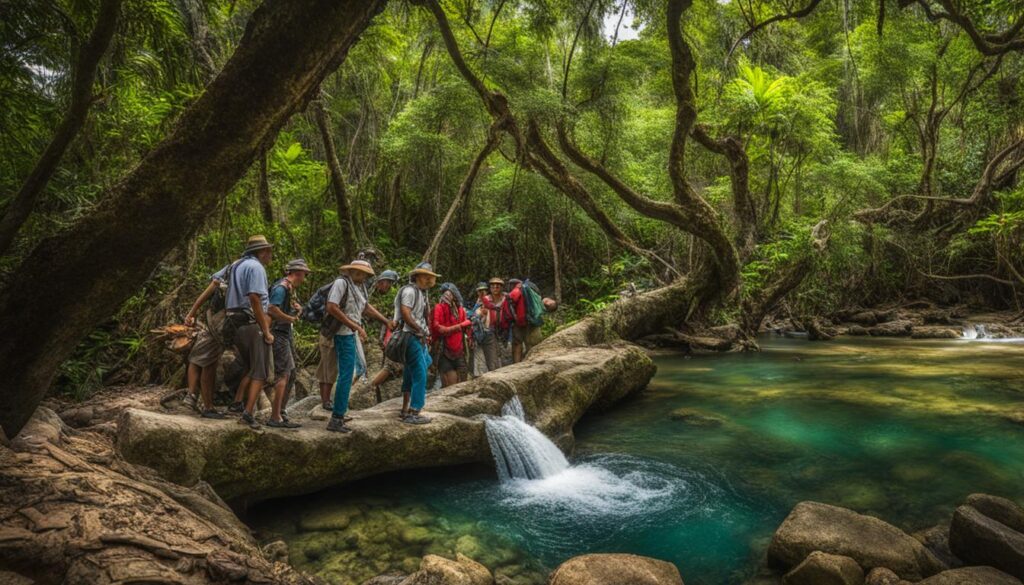
Join a Nature Tour as a US Educational Institution
US educational institutions, including universities and colleges, have the unique opportunity to organize and sponsor educational trips to Cuba. These nature tours provide a valuable learning experience for students, faculty, and staff, allowing them to immerse themselves in the rich biodiversity and cultural heritage of Cuba.
By joining a nature tour in Cuba, educational institutions can offer structured educational programs that combine classroom learning with hands-on field experiences. Students can engage in wildlife research, participate in conservation activities, and learn about sustainable practices firsthand.
Furthermore, these educational trips foster cultural exchanges, promoting a deeper understanding and appreciation of Cuban traditions, history, and way of life. Students will have the chance to interact with local communities, learn from Cuban experts in permaculture and conservation, and gain a global perspective on environmental issues.
Key Benefits of Joining a Nature Tour:
- Structured Educational Programs: Educational institutions can design customized itineraries that align with their academic goals and objectives, ensuring a well-rounded educational experience for participants.
- Cultural Exchanges: Students can engage with locals, building connections and fostering cross-cultural understanding.
- Research Opportunities: Nature tours in Cuba provide a unique platform for research collaboration, facilitating scientific studies on biodiversity conservation and sustainable practices.
- Experiential Learning: Participants can gain practical skills and knowledge through hands-on activities, such as wildlife observation, data collection, and environmental restoration projects.
- Community Engagement: By supporting local communities and sustainable tourism initiatives in Cuba, educational institutions contribute to the socio-economic development of the region.
It is important to note that compliance with the Office of Foreign Assets Control (OFAC) guidelines is necessary when organizing educational trips to Cuba. Authorized travel providers, like Authentic Cuba Travel, can assist in navigating the legal requirements and ensuring a smooth and compliant travel experience.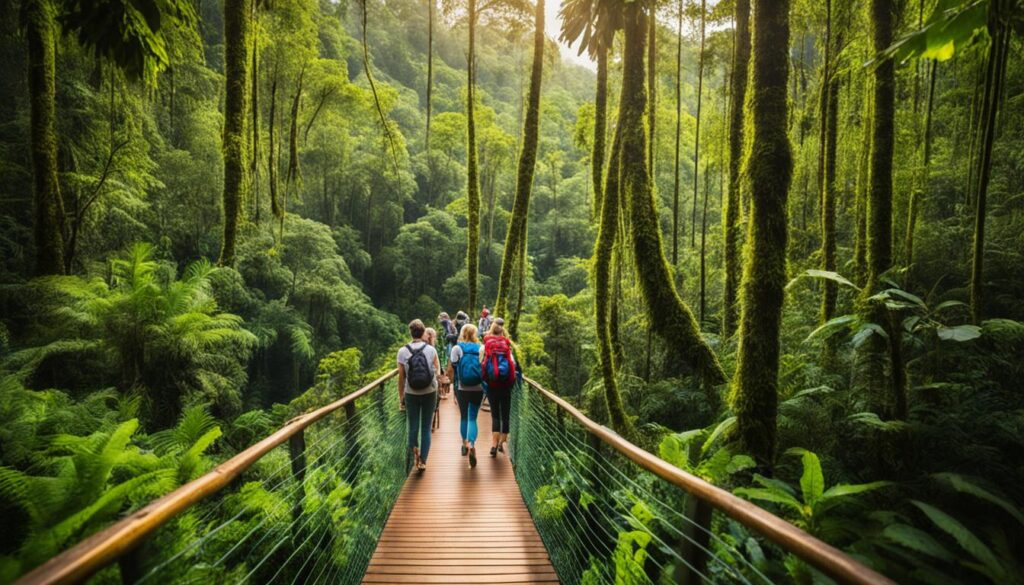
Testimonial:
“Our university’s nature tour in Cuba was an incredible experience for our students. They were able to witness the unique biodiversity of Cuba, learn from local experts, and contribute to conservation efforts. The cultural exchanges and research opportunities enriched their understanding of environmental issues and fostered global citizenship.” – Dr. Emily Thompson, Professor of Ecology, University of XYZ
Join a Nature Tour as a US Wildlife Organization
US wildlife organizations have the opportunity to organize and participate in nature tours in Cuba, benefiting from the General License for Educational Activities. These tours provide an avenue for wildlife researchers, bird conservancy organizations, and environmental organizations to engage in educational activities, conduct professional research, and contribute to nature conservation efforts.
Engage in Educational Activities
By joining a nature tour in Cuba, US wildlife organizations can participate in educational activities that promote knowledge sharing and learning. Expert guides and local experts provide valuable insights into Cuba’s unique biodiversity, conservation practices, and sustainable initiatives. Through workshops, presentations, and field excursions, wildlife organizations can broaden their understanding of Cuban ecosystems and gain new perspectives on conservation strategies.
Conduct Professional Research
One of the key advantages of joining a nature tour as a US wildlife organization is the opportunity to conduct professional research in collaboration with Cuban experts. By exploring diverse habitats, studying local species, and collecting data, wildlife organizations can contribute to scientific research and contribute to conservation efforts. The exchange of knowledge and expertise between US and Cuban researchers fosters a global approach to wildlife conservation.
Contribute to Nature Conservation Efforts
Participation in a nature tour allows US wildlife organizations to actively contribute to nature conservation efforts in Cuba. By sharing their experiences, best practices, and innovative approaches, organizations can collaborate with Cuban counterparts to develop sustainable conservation strategies. Through fieldwork, data collection, and engagement with local communities, wildlife organizations play a vital role in protecting Cuba’s unique wildlife and their habitats.
List of US Wildlife Organizations Engaging in Nature Tours in Cuba
| Organization | Description |
|---|---|
| National Audubon Society | Leading bird conservation organization focused on protecting birds and their habitats through science, advocacy, and education. |
| Center for Biodiversity and Conservation | International conservation organization that advances scientific research and fosters partnerships to safeguard biodiversity. |
| Defenders of Wildlife | Non-profit organization committed to protecting endangered species and habitats in North America and around the world. |
| Conservation International | Global organization dedicated to protecting nature and promoting sustainable development to benefit both people and the planet. |
Joining a nature tour in Cuba as a US wildlife organization not only provides an enriching experience but also contributes to the collective effort of conserving precious wildlife and their habitats. Together, these organizations can make a significant impact and foster long-term partnerships for the benefit of biodiversity in Cuba and beyond.
Authentic Cuba Travel’s Nature Tours
Experience the wonders of Cuba’s biodiversity with Authentic Cuba Travel’s nature tours. These immersive tours are specially designed to explore the country’s rich natural landscapes and engage in cross-cultural experiences. Led by expert guides in environmental conservation, our nature tours provide unique insights into Cuba’s stunning beauty and sustainable practices.
At Authentic Cuba Travel, we understand the importance of preserving and protecting Cuba’s unique ecosystems. Our nature tours focus on sustainable travel, ensuring minimal impact on the environment while offering an unforgettable experience.
During our nature tours, you’ll have the opportunity to:
- Explore diverse ecosystems, including rainforests, coastal wetlands, and coral reefs.
- Observe an array of wildlife, from rare bird species to nesting sea turtles.
- Learn from local experts in permaculture and environmental conservation.
- Immerse yourself in Cuban culture, enjoying traditional food, music, and camaraderie.
Our expert guides will take you to the most biodiverse areas of Cuba, including UNESCO World Heritage Sites and Biosphere Reserves. You’ll witness the country’s commitment to wildlife preservation and gain a deeper understanding of its fragile ecosystems.
Authentic Cuba Travel is dedicated to providing exceptional, educational experiences while promoting sustainable and responsible tourism. Our nature tours offer a unique blend of adventure, education, and cultural immersion that will leave you with lasting memories.
Ready to embark on an unforgettable journey through Cuba’s natural wonders? Join Authentic Cuba Travel’s nature tours and discover the remarkable biodiversity that makes Cuba a truly extraordinary destination.
| Tour | Duration | Highlights |
|---|---|---|
| Nature’s Haven | 7 days | – Exploring the Zapata Peninsula, a UNESCO Biosphere Reserve – Birdwatching in the lush rainforests – Snorkeling in vibrant coral reefs |
| Coastal Treasures | 10 days | – Visiting the breathtaking beaches of Varadero and Trinidad – Experiencing the nesting rituals of sea turtles – Discovering the vibrant marine life in Cuba’s coastal waters |
| Wildlife Expedition | 14 days | – Exploring the remote areas of Sierra Maestra and Topes de Collantes – Tracking elusive Cuban crocodiles – Observing endemic bird species in their natural habitats |

Discover Cuba’s Unique Wildlife
Cuba boasts a remarkable array of unique wildlife, making it a paradise for nature enthusiasts. From elusive Cuban crocodiles and delicate miniature birds and frogs to mesmerizing migrating land crabs, Cuba’s wildlife is as diverse as it is captivating.
Exploring the protected areas and national parks of Cuba provides an unparalleled opportunity to witness these fascinating creatures in their natural habitats. Whether you’re hiking through lush rainforests, diving into vibrant coral reefs, or traversing coastal wetlands, Cuba’s extraordinary wildlife never fails to leave a lasting impression.
One of Cuba’s iconic wildlife species is the Cuban crocodile (Crocodylus rhombifer), found only in this Caribbean island nation. With its distinctive snout and striking yellow markings, this endangered reptile is a true testament to Cuba’s unique biodiversity.
Another captivating highlight of Cuba’s wildlife is the world’s smallest bird, the Bee Hummingbird. Weighing in at just 2.6 grams, this tiny hummingbird is a sight to behold with its iridescent feathers and dazzling aerial acrobatics amidst Cuba’s lush flora.
Cuba also boasts the world’s smallest frog, the Monte Iberia Eleuth (Eleutherodactylus iberia). This diminutive amphibian measures a mere 9.8 millimeters and is endemic to Cuba’s Sierra de los Órganos mountain range. Its minuscule size and vibrant coloration make it a highly sought-after sighting for wildlife enthusiasts.
“Cuba’s wildlife is a treasure trove of rare and distinctive species, reflecting the country’s unique ecosystems and commitment to conservation. From its endemic species to charismatic migrants, Cuba offers an unforgettable wildlife experience for all nature lovers.” – Dr. María García, Wildlife Researcher
One of the most spectacular natural phenomena in Cuba is the migration of land crabs. Every year, millions of land crabs embark on a remarkable journey from the island’s forests to the sea, painting the landscape red with their vibrant colors. This incredible spectacle showcases the resilience and adaptability of Cuba’s wildlife.
To fully immerse yourself in the wonders of Cuba’s unique wildlife, embark on a nature tour that takes you into the heart of its protected areas and national parks. Experienced guides and local experts will lead you on unforgettable adventures, providing insights into the intricate ecosystems and the remarkable species that inhabit them.
Sustainable Practices in Cuba
In spite of being a relatively poor country, Cuba has demonstrated a strong commitment to sustainability through its self-sustainable practices. This commitment is reflected in various aspects of Cuban society, from agriculture to education and healthcare. Through these sustainable practices, Cuba has managed to make significant contributions to environmental friendliness and conservation.
Agricultural Self-Sufficiency
One remarkable example of Cuba’s sustainable practices is its agricultural self-sufficiency. Due to historical circumstances, such as the trade embargo, Cuba has had to rely on its own resources for food production. This has led to the development of innovative agricultural techniques, including organic and urban farming. By reducing the reliance on imported goods, Cuba has not only improved its food security but also minimized the environmental impact associated with long-distance transportation.
Renewable Energy Sources
Cuba has also made significant strides in harnessing renewable energy sources, further highlighting its commitment to sustainability. The country has been investing in wind, solar, and biomass energy, reducing its dependence on fossil fuels. This transition to renewable energy has both environmental and economic benefits, paving the way for a greener and more sustainable future for Cuba.
Education and Scientific Research
Cuba’s dedication to sustainability is further evident in its emphasis on education and scientific research. Despite its economic challenges, Cuba has managed to produce a high percentage of scientists in Latin America. This investment in education and research has contributed to the country’s ability to develop sustainable practices and find innovative solutions to environmental issues.
Citizen Participation and Environmental Awareness
Cuba recognizes the importance of citizen participation and environmental awareness in achieving sustainable development. The government actively promotes environmental education and encourages citizen involvement in conservation efforts. Through initiatives like community-based reforestation projects, waste management programs, and eco-tourism, Cuba is fostering a sense of responsibility towards the environment among its citizens.
| Sustainable Practices in Cuba | Benefits |
|---|---|
| Agricultural Self-Sufficiency | – Improved food security – Reduced environmental impact |
| Renewable Energy Sources | – Reduced dependence on fossil fuels – Economic and environmental benefits |
| Education and Scientific Research | – Development of innovative solutions – Contribution to sustainable practices |
| Citizen Participation and Environmental Awareness | – Fostering a sense of responsibility – Conservation and community engagement |
By incorporating sustainable practices into various aspects of its society, Cuba is setting an exemplary model for others to follow. Its self-sufficiency, renewable energy efforts, investment in education and research, and citizen participation demonstrate a genuine commitment to environmental preservation and a sustainable future.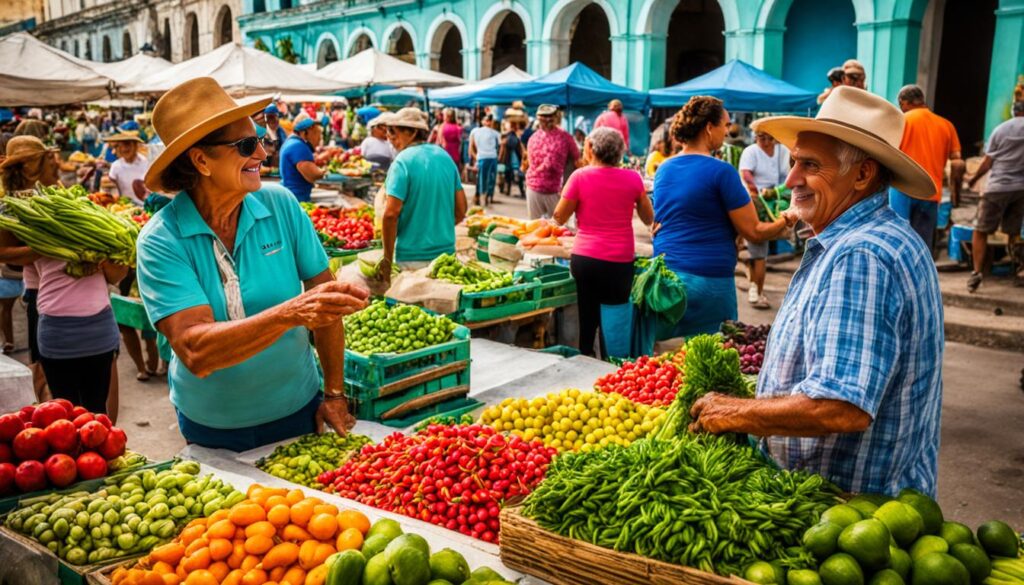
Plan Your Cuba Nature Tour Itinerary
Planning a Cuba nature tour itinerary involves careful consideration of your interests and goals. To make the most of your trip, select destinations, accommodations, and activities that align with your preferences. Here are some key factors to consider when planning your Cuba nature tour:
Destinations:
Cuba is home to diverse ecosystems, each offering unique wildlife and landscapes. Research the different regions of Cuba and identify the areas that interest you the most. Whether it’s exploring the lush rainforests, coastal wetlands, or vibrant coral reefs, choose destinations that align with your nature and wildlife preferences.
Accommodations:
Consider the type of accommodations that best suit your requirements. Cuba offers a range of options, from luxury hotels to private homestays known as Casas Particulares. Stay in comfortable surroundings that allow you to relax and rejuvenate after a day spent exploring nature.
Activities:
Think about the specific wildlife you want to observe and the experiences you wish to have during your Cuba nature tour. Identify activities such as birdwatching, snorkeling, hiking, or wildlife photography that align with your interests. Engaging in these activities will enhance your overall experience and create lasting memories.
Duration:
Consider the duration of your trip when planning your itinerary. Determine how many days you have available and allocate time for each destination and activity accordingly. This will help you make the most of your Cuba nature tour and ensure you have ample time to explore each location.
Tour Operator:
Working with a reputable tour operator like Authentic Cuba Travel can greatly enhance your experience. Their expertise in planning nature tours in Cuba ensures that your itinerary is well-structured, maximizing your opportunities to observe wildlife and immerse yourself in the country’s natural beauty.
By carefully planning your Cuba nature tour itinerary, you can ensure a well-rounded and fulfilling trip that allows you to explore the country’s rich biodiversity, engage in exciting activities, and create lasting memories.
Traveling to Cuba from the US
When it comes to traveling to Cuba from the US, there are specific regulations and guidelines that must be followed. As an American traveler, it is important to stay updated on the latest travel restrictions and requirements.
Authorized US organizations can assist in arranging flights and visa arrangements either through US ports or third countries. These organizations have the knowledge and experience to navigate the necessary paperwork and ensure compliance with the regulations set out by both the US and Cuban governments.
Flight and Visa Arrangements
Authorized US organizations can facilitate flight and visa arrangements for travelers heading to Cuba. Flights may be arranged from US airports that have been granted permission for direct travel, or they may be organized through third countries, such as Canada or Mexico. The organizations will handle the necessary logistics, ensuring a smooth and hassle-free journey.
Visa arrangements are essential for entry into Cuba. Depending on the purpose of your trip, different types of visas may apply. US organizations will assist in obtaining the appropriate visa and guide you through the necessary steps to ensure compliance with Cuban immigration requirements.
Staying Updated on Travel Restrictions
Given the evolving nature of travel restrictions, it is crucial to stay informed about any changes that may occur. The US Department of State and Treasury Department’s Office of Foreign Assets Control (OFAC) are reliable sources for up-to-date information on travel restrictions and guidelines for Americans traveling to Cuba.
“It is imperative for travelers to keep themselves informed about the latest travel restrictions and requirements when planning a trip to Cuba. By staying updated on the regulations, you can ensure a smooth and lawful travel experience.”
Conclusion
Cuba’s rich biodiversity, pristine landscapes, and commitment to wildlife conservation make it an exceptional destination for nature enthusiasts. With its diverse ecosystems encompassing rainforests, coastal wetlands, and coral reefs, Cuba is a haven for a wide variety of wildlife. From birdwatching to observing nesting sea turtles and marine life, travelers can immerse themselves in the country’s unique biodiversity on a Cuba nature tour.
By participating in a Cuba nature tour, travelers not only have the opportunity to discover and appreciate the country’s unique wildlife but also engage in cross-cultural experiences. They can explore UNESCO World Heritage Sites, Biosphere Reserves, and other natural landscapes, while also learning from Cuban experts in permaculture and conservation. Additionally, travelers can indulge in traditional local food, music, and camaraderie, enhancing their overall experience.
Moreover, participating in a Cuba nature tour allows travelers to contribute to the preservation of these invaluable ecosystems. Cuba’s commitment to wildlife conservation is exemplified through ongoing research, monitoring, and the active involvement of citizen scientists. By supporting these efforts, travelers can play a role in the long-term sustainability of Cuba’s rich biodiversity and help protect the habitats of its unique species.FAQ
What kind of wildlife can be found in Cuba?
Where can I find the richest biodiversity in Cuba?
What are the threats to Cuba’s biodiversity?
What are the wildlife conservation efforts in Cuba?
How can I explore Cuba’s biodiversity?
What are the accommodation options in Cuba?
What are the must-visit destinations in Cuba?
What are the travel restrictions for Americans visiting Cuba?
Can US educational institutions organize trips to Cuba?
Can US wildlife organizations organize trips to Cuba?
What does Authentic Cuba Travel offer for nature tours?
What unique wildlife can be found in Cuba?
What sustainable practices can be found in Cuba?
How do I plan a Cuba nature tour itinerary?
How can Americans travel to Cuba?
Why is Cuba a great destination for nature enthusiasts?
Laura is a versatile writer and editor whose passion for animals shines through in her work. With a keen understanding of language and a love for storytelling, Laura crafts compelling narratives that captivate our audience and inspire action regarding animal welfare. Whether she’s delving into the latest research or sharing heartwarming stories of animal companionship, Laura’s work will leave a lasting impression on all who read it.
Animal Facts
Diverse Wildlife: Exploring Animals in China

Did you know that China is home to more than 100 species of wildlife, including the iconic giant panda, golden-haired monkey, South China tiger, and red-crowned crane?
China’s vast regions, diverse terrain, and climate variations have led to a rich variety of flora and fauna in the country. With nearly 500 animal species, 1,189 bird species, and over 500 reptile and amphibian species, China boasts an impressive biodiversity. Conservation efforts, such as the establishment of the China Wildlife Conservation Association and the Wildlife Protection Law, have helped preserve these unique and rare species.
Key Takeaways:
- China is home to over 100 species of wildlife, including the giant panda and South China tiger.
- The country’s diverse terrain and climate variations have contributed to its rich biodiversity.
- Conservation efforts, such as the establishment of the China Wildlife Conservation Association, have played a crucial role in preserving China’s unique animal species.
- China has nearly 500 animal species, 1,189 bird species, and over 500 reptile and amphibian species.
- Exploring China’s diverse wildlife offers a unique and unforgettable experience for nature enthusiasts.
Habitats in China
China is blessed with a diverse range of habitats and landscapes, making it a haven for wildlife. From dense forests to vast grasslands, the country’s ecosystems are rich and varied, offering a home to a wide array of animal species. Let’s explore some of the fascinating habitats found in China:
Forests
The forests of China are teeming with life and encompass a range of types, including boreal, deciduous, coniferous, mixed, and tropical forests. These lush green havens provide shelter and food for numerous animal species, fostering a thriving ecosystem. The diverse flora and fauna found within these forests contribute to the biodiversity of China.
Grasslands
The rolling grasslands, also known as steppes, stretch across vast areas of China. These expansive plains support a unique blend of wildlife and provide crucial grazing grounds for numerous herbivores. The grasslands are also home to a variety of avian species, such as the iconic black-necked crane, creating a spectacle for birdwatchers.
Deserts
China’s deserts, such as the Gobi Desert, are harsh and unforgiving, yet they harbor their own remarkable ecosystem. Known for their stunning sand dunes and extreme temperatures, these arid landscapes are home to desert-dwelling animals and plants that have adapted to survive in this challenging environment.
Mangroves
The mangroves along China’s coast are a vital habitat for numerous species. These unique coastal forests provide a protective home for diverse marine life, including fish, crabs, and migratory birds. The intricate root systems of the mangroves also serve as a natural barrier, protecting coastal regions from erosion and storm surges.
Mountainous Regions
China’s mountainous regions, such as the Himalayas and the Tibetan Plateau, offer a dramatic contrast to the country’s low-lying areas. These towering peaks create distinct microclimates and host a range of habitats, from high-altitude grasslands to alpine meadows and snow-capped peaks. The mountainous regions of China are home to unique and endangered species, including the elusive snow leopard.
China’s landscapes are a testament to the country’s incredible biodiversity. With a variety of habitats, ranging from lush forests to arid deserts, there is a wealth of unique ecosystems to explore in this vast country. These diverse habitats provide essential resources for wildlife and contribute to the preservation of China’s rich biological tapestry.
Endangered Species in China
China is home to several endangered species, including the giant panda, South China tiger, and Chinese alligator. These iconic animals are not only important symbols of China’s wildlife heritage but also key indicators of the health of their respective habitats. To ensure their survival, wildlife conservation efforts in China have gained international support.
The establishment of wildlife reserves and national forest areas has provided protected spaces for endangered species to thrive. Additionally, extensive awareness campaigns and research studies have furthered our understanding of their unique needs and behaviors. As a result, there have been encouraging signs of population growth for certain species.
For instance, the golden monkey, takin, eld’s deer, and Chinese alligator are among the endangered species in China that have shown promising population recoveries, thanks to dedicated conservation efforts. These positive outcomes highlight the effectiveness of wildlife conservation strategies implemented in the country.
“China’s commitment to protecting endangered species is commendable. By creating protected areas, raising awareness, and conducting vital research, they are making a positive impact on biodiversity conservation.”
However, the work is far from over. The continued protection and conservation of these endangered species require sustained efforts and global collaboration. By safeguarding these animals and their habitats, China is not only preserving its natural heritage but also contributing to global biodiversity conservation.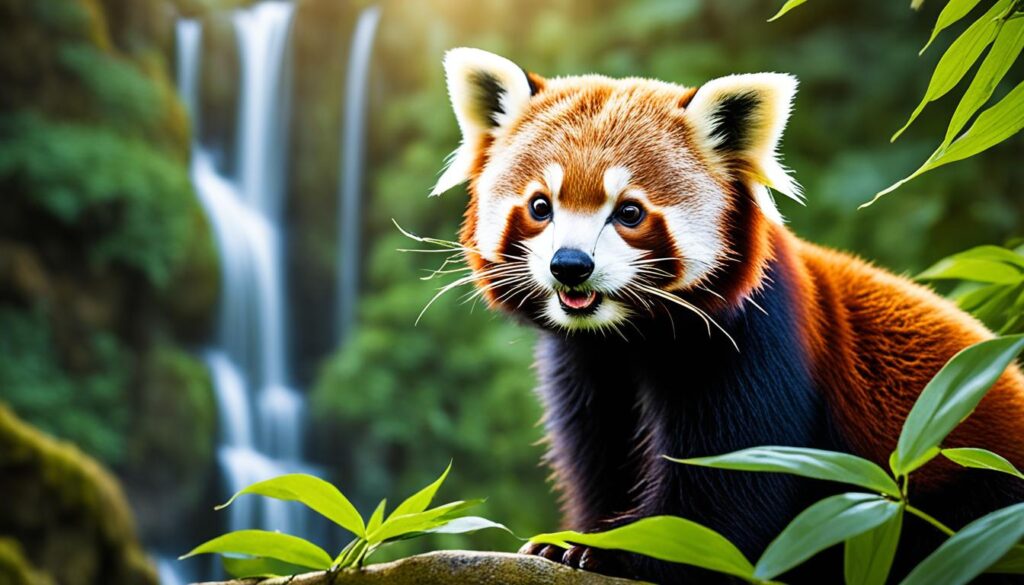
| Endangered Species | Scientific Name | Status |
|---|---|---|
| Giant Panda | Ailuropoda melanoleuca | Endangered |
| South China Tiger | Panthera tigris amoyensis | Critically Endangered |
| Chinese Alligator | Alligator sinensis | Critically Endangered |
Notable Wildlife in China
China boasts a remarkable array of notable wildlife species, with a diverse range of animals that are unique to the country. In addition to the well-known giant panda, golden haired monkey, and South China tiger, there are several other fascinating wildlife species that call China their home. Let’s explore some of these remarkable creatures that contribute to the wildlife diversity in China.
Red-crowned Crane

“The red-crowned crane is a majestic bird that is considered a symbol of luck and longevity in China. With its striking red crown and graceful appearance, these beautiful cranes are a sight to behold. They can be found in the wetlands and marshes of northeastern China, where they perform an elegant dance during courtship.”
Unique Primate Species
China is home to 18 species of primates that cannot be found in other countries of the same latitude. These remarkable creatures add to the country’s wildlife diversity and are a testament to China’s unique ecosystems. Among the notable primate species in China are the Hainan gibbon, Yunnan snub-nosed monkey, and golden snub-nosed monkey.
Crane Species
China is also home to a significant number of crane species. In fact, nine out of the fifteen known crane species in the world can be found in China. These elegant birds, with their impressive wingspan and graceful movements, have captured the imagination of wildlife enthusiasts worldwide. Species such as the Hooded crane, White-naped crane, and Black-necked crane thrive in China’s wetland habitats.
| Notable Wildlife Species | Location | Description |
|---|---|---|
| Giant Panda | Mountainous regions of central and southwestern China | The giant panda is a beloved symbol of China and an iconic global conservation species. It is known for its distinctive black and white fur and bamboo diet. |
| Golden Haired Monkey | Mountainous forests in southwestern China | The golden haired monkey, also known as the golden snub-nosed monkey, is a unique primate species with golden fur and a striking appearance. |
| South China Tiger | Historically found in southern China | The South China tiger is one of the most endangered tiger species in the world. Efforts are underway to protect and revive its population. |
Wildlife Tourism in China
Wildlife tourism in China has gained significant popularity in recent years, attracting nature enthusiasts and adventure seekers from around the world. With its diverse flora and fauna, China offers a unique opportunity to explore and appreciate its incredible wildlife.
Wildlife tours in China provide an immersive experience, allowing visitors to witness the country’s rich biodiversity up close. From the enchanting giant pandas in their natural habitat to the elusive South China tiger, there are numerous awe-inspiring wildlife encounters awaiting travelers.
One of the highlights of wildlife tours in China is the chance to observe a variety of bird species, reptiles, and amphibians. Whether it’s the graceful flight of the red-crowned crane or the fascinating colors of the Chinese alligator, exploring Chinese wildlife offers a captivating experience for nature lovers.

Benefits of Wildlife Tourism in China
1. Conservation: Wildlife tourism plays a crucial role in supporting conservation efforts in China. By raising awareness and generating income through responsible tourism, it helps fund wildlife protection initiatives and habitat preservation.
2. Education and Research: Wildlife tours provide opportunities for educational experiences and scientific research. Visitors can learn about the importance of biodiversity conservation and contribute to the collection of valuable data for ongoing studies.
3. Sustainable Development: Well-managed wildlife tourism promotes sustainable development by integrating conservation practices with local communities. It can generate income and employment opportunities while ensuring the long-term protection of natural resources.
4. Cultural Exchange: Wildlife tours in China often involve interactions with local communities, offering a chance to learn about traditional customs and practices. This cultural exchange promotes mutual understanding and appreciation.
“Exploring wildlife in China allows visitors to witness the wonders of nature and fosters a deep appreciation for the need to protect and conserve these magnificent species.”
Recommended Wildlife Tours in China
When planning a wildlife tour in China, consider the following options:
| Tour Name | Highlights | Duration |
|---|---|---|
| Giant Panda Encounter | Get up close with adorable giant pandas and learn about conservation efforts. | 3 days |
| Tigers of China | Embark on a quest to spot the elusive South China tiger in its natural habitat. | 5 days |
| Birdwatching Extravaganza | Discover the diverse avian species of China, including the iconic red-crowned crane. | 7 days |
| Reptiles and Amphibians Expedition | Explore unique habitats to observe fascinating reptiles and amphibians like never before. | 10 days |
Embarking on a wildlife tour in China promises an unforgettable adventure, providing a deeper understanding and appreciation for the country’s extraordinary biodiversity.
Conservation Efforts in China
China has demonstrated a significant commitment to wildlife conservation, recognizing the importance of preserving its diverse ecosystems and unique species. One of the key organizations driving these efforts is the China Wildlife Conservation Association (CWCA), established in 1983. Through its initiatives and partnerships, the CWCA plays a vital role in promoting wildlife conservation and raising public awareness.
Moreover, the Chinese government has established conservation policies to further protect the country’s wildlife. The Wildlife Protection Law, passed by the government, serves as a foundation for these policies. It sets guidelines and regulations for the protection and management of wildlife and their habitats.
By the end of 1995, China had established over 574 forest or wildlife reserves, covering 8.7% of the national territory. These reserves serve as protected areas for a wide range of species, safeguarding their habitats and supporting their population growth. The establishment of these reserves illustrates China’s commitment to preserving its precious wildlife and biodiversity.
China’s conservation efforts have been instrumental in safeguarding the nation’s unique and endangered species. Through the establishment of reserves and the implementation of conservation policies, China continues to make significant strides in preserving its rich wildlife heritage.
To provide a deeper understanding of the extent of China’s conservation efforts, the following table highlights key milestones:
| Date | Conservation Milestone |
|---|---|
| 1983 | Establishment of the China Wildlife Conservation Association |
| _____ | Passage of the Wildlife Protection Law |
| 1995 | Establishment of over 574 forest or wildlife reserves |
| 2021 | Ongoing efforts in conservation and sustainable practices |
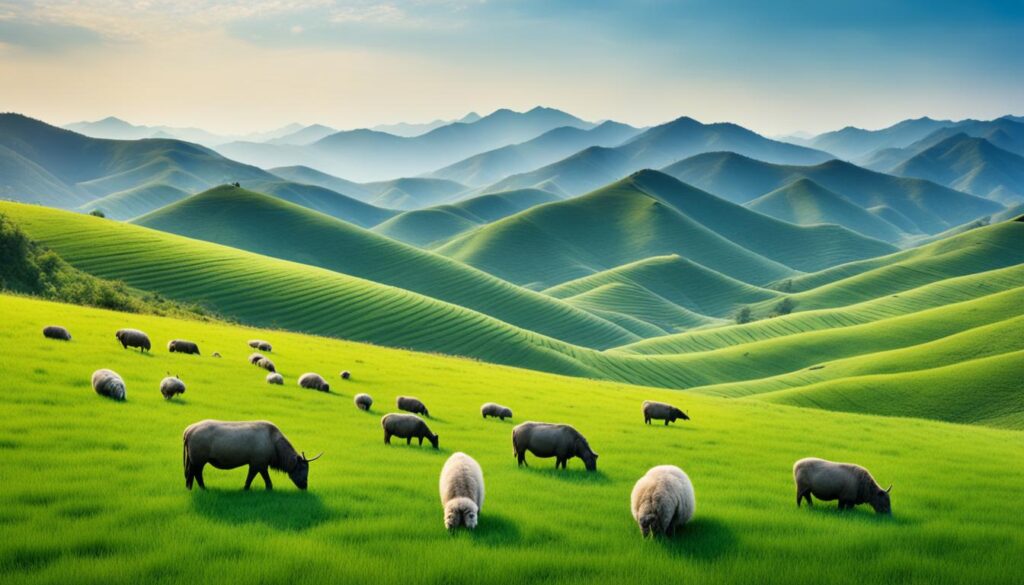
China’s dedication to wildlife conservation is commendable, as it not only protects its endemic species but also contributes to the global efforts in biodiversity preservation. These conservation measures play a crucial role in maintaining the delicate balance of ecosystems, promoting sustainable development, and nurturing a harmonious coexistence between humans and wildlife.
Unique Bird Species in China
China is a haven for bird enthusiasts, boasting a remarkable diversity of avian species. With over 1,189 bird species, including several endemic and rare species, China offers a wealth of birdwatching opportunities. Birdwatching enthusiasts can enjoy observing these beautiful creatures in their natural habitats across the country. Some of the notable bird species found in China include:
- Red-crowned crane
- Black-necked crane
- Black-headed gull
These birds showcase the stunning avian diversity in China, captivating birdwatchers with their unique characteristics and behaviors. The red-crowned crane, with its graceful appearance and elegant mating dance, is considered a symbol of luck and longevity in Chinese culture. The black-necked crane, found in the high-altitude regions of China, is known for its striking black and white plumage. The black-headed gull, on the other hand, is a migratory bird that can be observed in various wetland habitats throughout China.
To give you a glimpse of the beautiful red-crowned crane, here is an image of this majestic bird:
Seeing these unique bird species in their natural habitats is a truly captivating experience and a must-do for any bird lover visiting China.
Iconic Mammals in China
China is renowned for its iconic mammal species that have captivated the world with their unique characteristics and beauty. Among the famous wildlife species in China, three mammals stand out as symbols of the country’s rich wildlife heritage: the giant panda, golden haired monkey, and South China tiger.
The giant panda is perhaps the most well-known of all Chinese mammals. With its distinctive black and white fur, this gentle creature has become a global conservation icon and a beloved symbol of China. The giant panda’s endearing appearance and captivating behavior have made it a cherished species around the world.
The golden haired monkey, also known as the snub-nosed monkey, is another iconic mammal that inhabits the mountains of China. Known for its striking golden fur and unique ability to survive in cold climates, this monkey is a testament to the adaptability and resilience of China’s wildlife.
The South China tiger, considered one of the most endangered big cat species in the world, holds a special place in China’s wildlife conservation efforts. With its majestic presence and beautiful markings, the South China tiger represents the importance of protecting and preserving endangered species for future generations.
Visiting China offers wildlife enthusiasts the incredible opportunity to witness these iconic mammals in their natural habitats. Whether observing the giant pandas in the dense bamboo forests or catching a glimpse of the golden haired monkeys leaping through the treetops, encountering these magnificent creatures is an unforgettable experience.![]()
With China’s commitment to wildlife conservation and the establishment of protected areas, there is hope for the continued survival of these iconic mammals and other famous wildlife species in China. Through responsible tourism and ongoing conservation efforts, we can contribute to the preservation of China’s rich biodiversity and ensure a future where these incredible creatures continue to enchant and inspire.
Reptiles and Amphibians in China
China is renowned for its diverse wildlife, and its reptiles and amphibians are no exception. With over 500 species, the country boasts a remarkable array of these fascinating creatures. From the agile reptiles to the resilient amphibians, they play a vital role in China’s ecosystems.
One notable reptile found in China is the iconic Chinese alligator. With its unique appearance and status as a critically endangered species, it serves as a symbol of conservation efforts in the country. Another remarkable reptile is the Chinese water dragon, known for its striking colors and ability to adapt to various habitats.
China is also home to several endangered and endemic amphibian species, including the Chinese giant salamander. As one of the largest amphibians in the world, it stands as a testament to China’s rich biodiversity. Unfortunately, habitat loss and illegal trade pose significant threats to its survival.
The diverse habitats of China provide ideal conditions for the survival and reproduction of reptiles and amphibians. From the lush forests to the pristine wetlands, these creatures have adapted to thrive in their respective environments. The abundance of water bodies, such as lakes, rivers, and ponds, creates breeding grounds and sustains their populations.
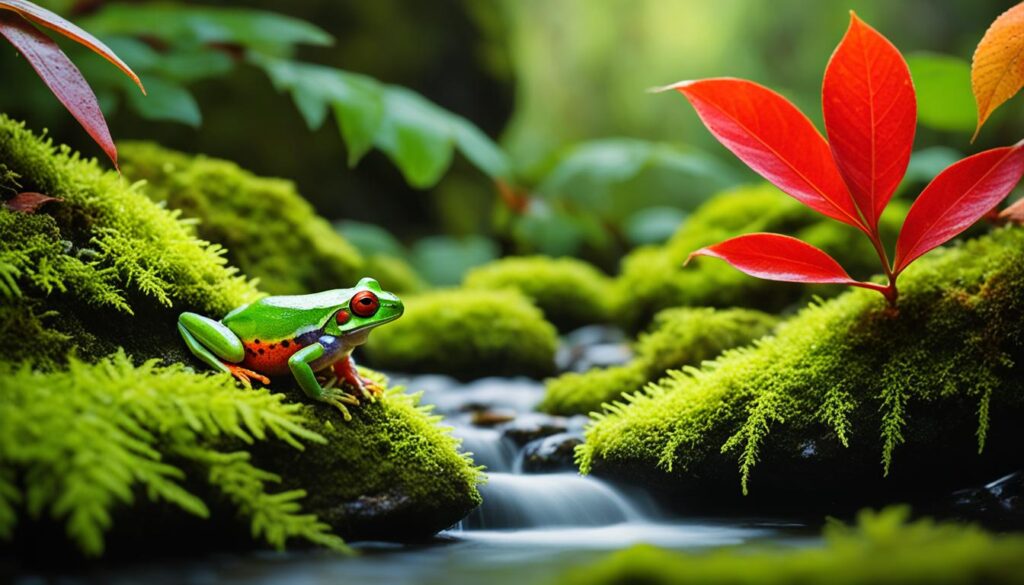
Table: Diversity of Reptiles and Amphibians in China
| Group | Number of Species |
|---|---|
| Reptiles | 365 |
| Amphibians | 178 |
Source: China Wildlife Conservation Association
Wildlife Conservation Organizations in China
When it comes to wildlife conservation in China, several organizations are at the forefront of protecting and preserving the country’s unique and diverse species. One of the leading organizations in this field is the China Wildlife Conservation Association (CWCA). Established in 1983, the CWCA focuses on implementing conservation initiatives to safeguard China’s wildlife and their habitats.
In addition to the CWCA, there are numerous conservation non-governmental organizations (NGOs) and research institutes dedicated to the cause of wildlife conservation in China. These organizations collaborate with government agencies, local communities, and international partners to promote sustainable practices and raise awareness about the importance of preserving China’s biodiversity.
The efforts of these wildlife conservation organizations in China are multifaceted. They conduct extensive research on endangered species, monitor wildlife populations, and develop conservation strategies and action plans. By working closely with local communities and stakeholders, they also promote community-based conservation initiatives and create sustainable livelihood opportunities that reduce reliance on activities harmful to wildlife.
Furthermore, these organizations play a significant role in raising public awareness through education and outreach programs. They organize workshops, seminars, and awareness campaigns to inform people about the importance of wildlife conservation, the threats faced by endangered species, and the actions individuals can take to contribute to conservation efforts.
One of the key aspects of wildlife conservation in China is the collaboration between government agencies, such as the CWCA, and NGOs. This collaboration enables the sharing of resources, expertise, and best practices, leading to more effective conservation outcomes. By combining their efforts, these organizations strive to address the challenges posed by habitat destruction, pollution, climate change, and illegal wildlife trade.
Below is a table highlighting some of the notable wildlife conservation organizations in China:
| Organization | Mission |
|---|---|
| China Wildlife Conservation Association (CWCA) | Focused on the protection and preservation of China’s unique wildlife species through research, awareness campaigns, and conservation initiatives. |
| Wildlife Conservation Society (WCS) China | Works towards conserving China’s wildlife and their habitats through research, community engagement, and capacity building. |
| WildAid China | Addresses the demand for illegal wildlife products through public awareness campaigns and advocacy efforts. |
| Nature Conservancy China | Focuses on sustainable land and water management, protecting critical habitats, and promoting community-based conservation. |
| Shanshui Conservation Center | Works to protect China’s natural ecosystems and wildlife through research, conservation planning, and grassroots engagement. |
These organizations, along with countless others, are instrumental in safeguarding China’s wildlife and preserving its rich biodiversity. Their dedication, combined with the collective efforts of individuals and communities, is vital for ensuring a sustainable future where both humans and wildlife can thrive.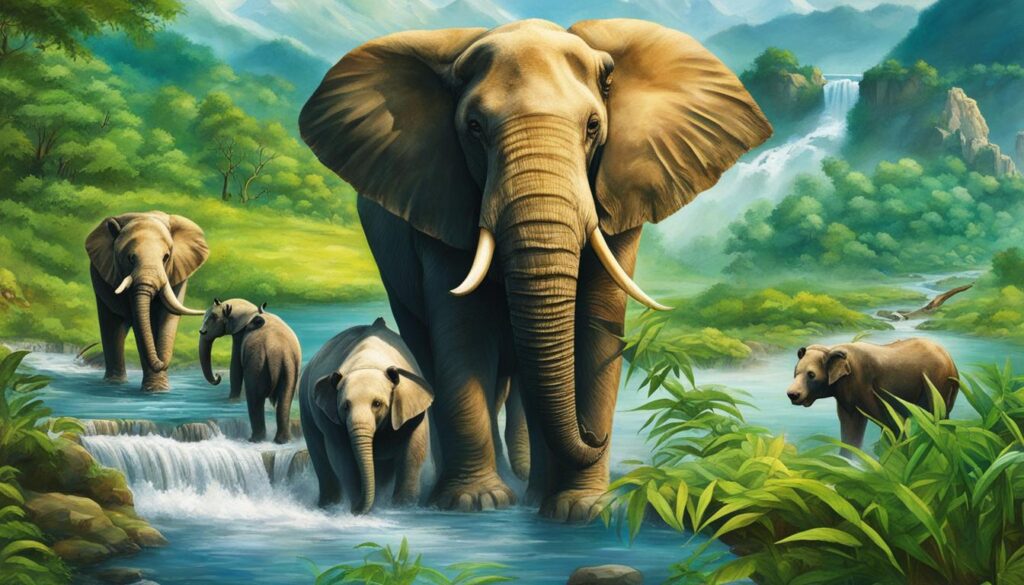
The Importance of Wildlife Conservation in China
Wildlife conservation plays a vital role in preserving the rich biodiversity of China, contributing to the balance of ecosystems and the overall health of the planet. China’s unique and endangered species, such as the giant panda and South China tiger, serve as important indicators of the health of their respective habitats.
By protecting these species, we are not only safeguarding their existence but also ensuring the conservation of the habitats they rely on. This, in turn, helps maintain the delicate balance of the ecosystems they inhabit, supporting other plant and animal species that depend on these habitats for survival.
Beyond the intrinsic value of preserving China’s wildlife, biodiversity conservation also has significant ecological and economic benefits. Healthy ecosystems provide essential services such as water filtration, climate regulation, and the pollination of crops. By preserving these ecosystems, we are safeguarding the well-being and livelihoods of future generations.
“The protection of endangered species and their habitats is a shared responsibility that requires global collaboration. China’s commitment to wildlife conservation is crucial for the preservation of our planet’s incredible natural heritage.”
To illustrate the importance of wildlife conservation in China, let’s take a closer look at the iconic giant panda. This beloved species, once on the brink of extinction, has become a symbol of successful conservation efforts. By protecting the giant panda’s habitat, implementing conservation measures, and raising public awareness, China has successfully brought this species back from the brink, demonstrating the positive impact of conservation initiatives.
Overall, wildlife conservation in China is not only about protecting individual species but also about preserving the intricate web of life that exists within its borders. It is a collective effort that requires collaboration between government agencies, conservation organizations, scientists, local communities, and individuals. Through our collective efforts, we can ensure the long-term survival of China’s wildlife and the invaluable ecosystems they inhabit.
| Benefits of Wildlife Conservation | Importance |
|---|---|
| Preservation of Biodiversity | Biodiversity is essential for maintaining ecological balance and supporting sustainable ecosystems. |
| Ecosystem Services | Conserved ecosystems provide crucial services such as water filtration, climate regulation, and pollination. |
| Economic Value | Ecotourism and sustainable wildlife practices generate revenue while preserving natural resources. |
| Indigenous Cultures | Conserving wildlife preserves the cultural heritage of indigenous communities connected to natural resources. |
| Education and Research | Protected habitats offer opportunities for scientific research and contribute to environmental education. |
Ecotourism and Sustainable Wildlife Practices in China
With the rise of ecotourism, there has been a growing emphasis on sustainable wildlife practices in China. Ecotourism initiatives promote responsible travel that minimizes the negative impact on the environment and local communities. By supporting ecotourism initiatives, travelers can contribute to the conservation of China’s wildlife while enjoying immersive and educational experiences. It is crucial to choose tour operators and accommodations that prioritize sustainability and respect for the natural habitats and wildlife of China.
Responsible Travel for Wildlife Conservation
When engaging in ecotourism activities in China, responsible travel practices play a vital role in ensuring the protection and preservation of wildlife. Travelers can make a positive impact by following these sustainable guidelines:
- Respect wildlife habitats and ecosystems, maintaining a safe distance from animals to minimize disturbance.
- Avoid purchasing products derived from endangered species, such as souvenirs made from ivory.
- Support local conservation organizations and initiatives through donations or volunteering.
- Choose tour operators that prioritize ethical wildlife encounters and adhere to responsible guidelines.
- Stay informed about local wildlife conservation practices and regulations to ensure compliance during your travels.
The Benefits of Ecotourism in China
Ecotourism not only contributes to the preservation of China’s wildlife but also brings several benefits to both the environment and local communities:
- Conservation Funding: Revenue generated from ecotourism activities can be reinvested into conservation efforts, including habitat protection, anti-poaching measures, and wildlife research.
- Community Development: Ecotourism creates opportunities for local communities to participate in sustainable economic activities such as guiding tours, providing accommodations, and selling locally sourced products.
- Environmental Education: Through guided tours and educational programs, ecotourism offers visitors the chance to learn about China’s unique wildlife, fostering awareness and understanding of the importance of conservation.
- Social and Cultural Exchange: Ecotourism encourages cultural appreciation and cross-cultural interaction, promoting mutual understanding and respect between travelers and local communities.
| Benefits of Ecotourism | Description |
|---|---|
| Funding for Conservation | Revenue generated from ecotourism activities can support wildlife conservation efforts, such as habitat protection and anti-poaching measures. |
| Community Development | Ecotourism provides opportunities for local communities to participate in sustainable economic activities and improve their livelihoods. |
| Environmental Education | Through guided tours and educational programs, ecotourism enhances visitors’ understanding of China’s wildlife and the importance of conservation. |
| Social and Cultural Exchange | Ecotourism encourages cultural appreciation and cross-cultural interaction, fostering mutual understanding and respect. |
By embracing ecotourism and practicing responsible travel, visitors to China can make a positive difference in wildlife conservation while experiencing the beauty and wonder of the country’s diverse flora and fauna.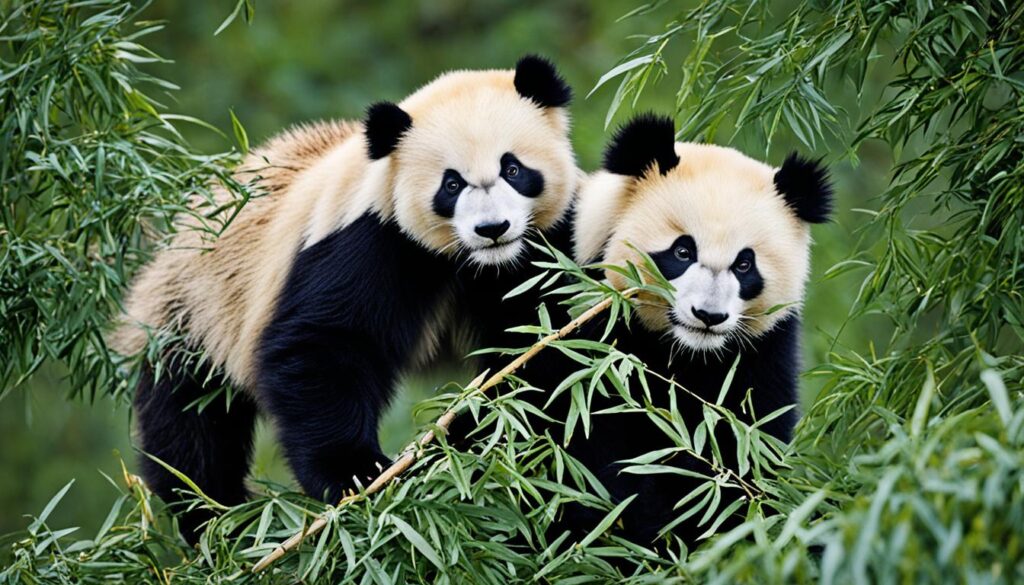
Future Challenges and Opportunities for Wildlife in China
Despite the progress made in wildlife conservation, China still faces various challenges in protecting its biodiversity. Habitat loss, climate change, poaching, and illegal wildlife trade are among the threats that need to be addressed.
“The conservation of wildlife and nature is not a one-time effort, but a continuous endeavor that requires active participation and collaboration.”
However, amidst these challenges, there are also opportunities for further conservation efforts in China. By integrating sustainable practices in various sectors, increasing public awareness, and fostering international collaborations, China can continue to safeguard its diverse wildlife for future generations.
Conservation Opportunities in China:
- Integration of sustainable practices in industries such as agriculture, forestry, and tourism, ensuring ecological balance.
- Initiatives to restore and protect critical habitats, such as reforestation and wetland conservation.
- Strengthening enforcement against poaching and illegal wildlife trade through stricter laws and penalties.
- Education and awareness campaigns to engage the public in conservation efforts and promote responsible behavior towards wildlife.
- International collaborations and knowledge sharing to benefit from global expertise and resources in wildlife conservation.
By addressing these challenges and seizing these opportunities, China can continue to be at the forefront of wildlife conservation, protecting its unique and irreplaceable flora and fauna.
| Wildlife Challenges in China | Conservation Opportunities in China |
|---|---|
| Habitat loss due to urbanization, infrastructure development, and agricultural expansion. | Integration of sustainable practices in various sectors to minimize the impact on habitats and promote wildlife-friendly development. |
| Climate change leading to habitat fragmentation, altered migration patterns, and increased risk of extinction. | Initiatives to restore and protect critical habitats, such as reforestation, preservation of wetlands, and the establishment of climate-resilient corridors. |
| Poaching and illegal wildlife trade, driven by demand for exotic pets, traditional medicine, and animal products. | Strengthening enforcement against poaching and illegal wildlife trade through stricter laws, increased surveillance, and collaboration with international law enforcement agencies. |
| Limited public awareness and understanding of the importance of wildlife conservation. | Education and awareness campaigns to engage the public, promote responsible behavior towards wildlife, and foster a culture of conservation. |
| Fragmented conservation efforts and lack of coordination among stakeholders. | International collaborations and knowledge sharing to benefit from global expertise, resources, and best practices in wildlife conservation. |
Conclusion
China’s vast landscapes and diverse ecosystems provide a home to an extraordinary range of animals, showcasing the country’s exceptional wildlife. From the beloved giant panda to the majestic South China tiger, these captivating creatures inspire awe and wonder. Thanks to dedicated conservation efforts, China has made significant strides in protecting its unique and endangered species, preserving its rich biodiversity for future generations.
By promoting responsible ecotourism and embracing sustainable practices, we can play a vital role in the preservation of China’s wildlife. Choosing travel options that prioritize sustainability and respect for the natural habitats and wildlife of China ensures that our exploration has a positive impact on the environment and local communities. Together, we can contribute to the conservation and protection of these incredible animals that inhabit this ancient land.
As we celebrate the incredible animals that call China home, let us also recognize the importance of safeguarding their habitats. The preservation of China’s diverse wildlife not only maintains the delicate balance of ecosystems but also contributes to the broader global efforts in biodiversity conservation. By appreciating and valuing the unique wildlife that exists in China, we take a step towards ensuring a sustainable and harmonious future for all species.FAQ
What is the biodiversity like in China?
What types of habitats can be found in China?
Are there any endangered species in China?
What are some notable wildlife species in China?
Is wildlife tourism popular in China?
What efforts are being made for wildlife conservation in China?
What bird species can be found in China?
What are some iconic mammal species in China?
What reptiles and amphibians are found in China?
Are there any organizations dedicated to wildlife conservation in China?
Why is wildlife conservation important in China?
How can I practice sustainable wildlife tourism in China?
What challenges and opportunities does China face in wildlife conservation?
What is the main focus of this article on China’s wildlife?
As our Editor-in-Chief, James plays a pivotal role in ensuring the quality and integrity of our content. With a keen eye for detail and a passion for storytelling, James oversees the editorial process here at A Place for Animals. With years of experience in content editing, James ensures that every piece of content meets our high standards of accuracy and clarity. Under James’ guidance, you can rest assured that the content you read is informative and impeccably crafted.
Animal Facts
Majestic African Animals with Horns – A Safari Guide

Did you know that there are millions of majestic African animals with horns roaming the vast savannas of the African continent? These magnificent creatures belong to the Bovidae family, which includes some of the most iconic and fascinating species found in Africa. From the stunning spiral horns of the Kudu to the remarkably straight horns of the gemsbok, the African wildlife is filled with an incredible diversity of horned animals.
Key Takeaways:
- Millions of majestic African animals with horns inhabit the African continent.
- These animals belong to the Bovidae family, which encompasses diverse species.
- Africa is home to spiral-horned, straight-horned, small-horned, and large-horned animals.
- Horns serve various functions, including defense, dominance, and thermoregulation.
- Conservation efforts are crucial for protecting these remarkable creatures and their habitats.
The Difference Between Horns and Antlers
Understanding the distinction between horns and antlers is crucial when studying African animals with horns. While both structures serve important purposes, they differ in their composition, growth, and function. Let’s explore the characteristics of horns and antlers.
Horns in the Bovidae Family
Horns are permanent structures found in animals belonging to the Bovidae family, including antelope, cows, sheep, and goats. These impressive appendages are composed of a bony core covered in keratin, a hard protein. Unlike antlers, horns continue to grow throughout an animal’s life. They serve various purposes such as defense against predators, establishing dominance within the herd, and attracting mates.
Antlers in the Cervidae Family
In contrast, antlers are found in animals belonging to the Cervidae family, such as deer, elk, and moose. Unlike horns, antlers are shed and regrown annually. They are composed solely of bone, lacking a keratin covering. Antlers serve primarily during the mating season, as males use them to compete for females by engaging in sparring matches. Additionally, antlers can be used for visual displays, signaling male dominance within their species.
Summary of Differences
| Horns | Antlers |
|---|---|
| Permanent structures | Shed and regrown annually |
| Continuously grow throughout life | Maximize size during mating season, then shed |
| Composed of a bony core covered in keratin | Composed solely of bone |
| Found in the Bovidae family | Found in the Cervidae family |
“Antlers are temporary weapons used by males during the breeding season, while horns are permanent structures, serving various functions throughout an animal’s life.”
Now that you understand the fundamental differences between horns and antlers, let’s delve into the fascinating world of African animals with their magnificent horned and antlered adaptations.
Spiral Horned Animals of Africa
The African continent is home to several antelope species with impressive spiral horns. Among them, the Bushbuck, Eland, and Kudu stand out as notable members of the “bushbuck tribe,” known for their elegant and twisted horns.
The Bushbuck, a solitary antelope, can be found in dense foliage near water sources. Its spiral horns complement its secretive nature, allowing it to navigate through the thick vegetation while still providing protection from predators.
The Eland, both giant and common, displays magnificent V-shaped spiral horns as one of its distinct features. These impressive horns add to the Eland’s grandeur and magnificence, making it a true spectacle to witness on the African savanna.
“The greater Kudu boasts one of the grandest pairs of spiral horns, reaching an average length of 48 inches with impressive twists,” says Dr. Jane Stevens, an expert in African wildlife.
These spiral-horned antelopes not only showcase nature’s creativity but also play vital roles in their respective ecosystems. Their horns serve as a symbol of strength, beauty, and dominance within their populations.

Straight Horned Animals of Africa
The gemsbok, a member of the Oryx family, is a remarkable example of straight-horned animals found in Africa. With its light greyish-tan coloring and striking black and white markings, the gemsbok is a visually captivating creature. What truly sets it apart is its almost perfectly straight horns, which average 33 inches in length.
Unlike many other species, both female and male gemsboks possess horns. However, there is a slight difference in their appearance. The female gemsboks have slightly thinner and longer horns compared to their male counterparts. These majestic horns play a crucial role in the gemsboks’ lives, serving as a means of protection and defense for their young and territories.

Small Horned Animals of Africa
Africa is not only home to large and impressive horned animals, but also to smaller antelope species that possess smaller yet functional horns. These small horned animals add charm and uniqueness to the African wildlife landscape. Let’s explore two fascinating examples: the dik-dik and the springbok.
The Dik-Dik: Delicate and Whistling
The dik-dik, an adorable antelope, boasts distinctive characteristics that make it stand out. Native to Eastern and Southern Africa, the dik-dik is known for its petite size and the incredibly cute appearance it presents. Only the males of this species have horns, which average around 3 inches in length. These small horns, though modest in size, play a crucial role in defense and territorial disputes.
What sets the dik-dik apart from other small horned animals is its unique ability to produce whistling warning calls. When sensing danger or feeling threatened, the dik-dik lets out a high-pitched whistle to communicate with its mate or alert other members of the herd, providing a crucial warning for the entire group.
To better understand the dik-dik and its distinct features, take a look at the table below:
| Dik-Dik | |
|---|---|
| Scientific Name | Madoqua spp. |
| Habitat | Eastern and Southern Africa, including savannas and bushland |
| Horns | Males only with small horns, approximately 3 inches in length |
| Distinctive Feature | Whistling warning calls |
The Springbok: Leaping Gracefully with Horns
South Africa’s national animal, the springbok, is another small horned antelope that captivates both locals and tourists alike. These graceful creatures are known for their remarkable jumping ability, often leaping high into the air in a behavior known as pronking. Springboks have both males and females with horns, which average between 14 and 20 inches in length.
The horns of the springbok curve inward and backward from the head, adding to their unique appearance. These horns serve as a symbol of strength and agility within the springbok community, playing a role in defense against predators and dominance battles between males during mating season.
Discover more about the springbok’s fascinating attributes in the table below:
| Springbok | |
|---|---|
| Scientific Name | Antidorcas marsupialis |
| Habitat | Grasslands and open plains of Southern Africa |
| Horns | Males and females have horns, averaging between 14 and 20 inches in length |
| Distinctive Feature | Characteristic jump (pronking) |

With their enchanting horns, the dik-dik and the springbok exemplify the diverse range of small horned animals found in Africa. From the whistling calls of the dik-dik to the elegant leaps of the springbok, these antelopes demonstrate the beauty and adaptability of African wildlife. Embrace the opportunity to observe these extraordinary creatures up close on your next safari adventure.
Large Horned Animals of Africa
Africa is renowned for its diverse wildlife, and when it comes to large horned animals, the continent boasts some of the most awe-inspiring creatures on Earth. Two notable examples are the Cape Buffalo and the Rhino.
The Cape Buffalo, also known as the African Buffalo, is a formidable beast found in grasslands and woodlands across sub-Saharan Africa. Both male and female Cape Buffalos sport impressive horns. In males, the horns can reach a span of up to 5 feet, while females have smaller but equally formidable horns. In some cases, the horns of Cape Buffalos can even fuse together, forming a powerful central structure.
On the other hand, Rhino species, such as the White Rhino and the Black Rhino, have keratin-covered appendages commonly referred to as horns. Although not technically classified as true horns, these unique features play an instrumental role in their survival. Rhinoceros populations have been devastated by illegal poaching due to the high demand for their horns in traditional medicine and as status symbols. This tragic trend has pushed these magnificent creatures to the brink of extinction, making them a critical focus for conservation efforts.
The image above reveals the striking presence of a Cape Buffalo, with its impressive fused horns, and represents the grandeur of these large horned animals found in Africa.
Other Notable Horned Animals of Africa
In addition to antelopes, Africa is home to other remarkable horned animals that continue to captivate wildlife enthusiasts. From the majestic Giraffe to the menacing Saharan Horned Viper, these creatures showcase the diversity and unique adaptations of horned species.
Giraffe
The Giraffe, known as the world’s tallest land animal, possesses a set of distinctive horns called ossicones. These ossicones are not true horns but instead are made of cartilage and covered in skin and fur. They serve as a form of protection and play a vital role during sparring battles between male Giraffes.
Saharan Horned Viper
The Saharan Horned Viper, found in the deserts of Africa, stands out with its horn-like scales above the eyes. These unique scales provide an imposing appearance and aid in camouflage, allowing the viper to blend seamlessly into its arid surroundings. They serve as a formidable warning to potential predators.

Eland
The Eland may not possess the longest or most twisted horns, but they are awe-inspiring nonetheless. These majestic antelopes can be found across various habitats in Africa and play significant cultural roles. Eland horns have been used in rituals and practices, symbolizing strength and wisdom among different communities.
Explore the remarkable features of these notable horned animals and witness their incredible adaptations in the wild. They are a testament to the intricate balance and inherent beauty found within Africa’s diverse wildlife.
The Role and Importance of Horns in African Wildlife
Horns play a crucial role in the lives of African wildlife, serving multiple functions that contribute to their survival and success in the wild. From defense against predators to dominance displays during mating rituals, horns are essential tools for these majestic creatures.
Defense Against Predators
One of the primary purposes of horns in African wildlife is defense. Horns act as formidable weapons, allowing animals to fend off potential predators and protect themselves, their young, and their territories. When threatened, these animals use their strong, sturdy horns to deliver powerful blows and deter attackers.
Dominance Battles and Mating Rituals
Males often engage in intense dominance battles, using their horns as weapons, to establish their hierarchical position within a group or herd. These battles determine which males have the right to mate with females and pass on their genes. The size, shape, and strength of their horns play a crucial role in determining dominance and ensuring successful mating.
“During mating season, males spar with their rivals, locking horns in fierce battles to assert their dominance and win the chance to mate.”
Attraction to Potential Mates
Horns also play a role in attracting potential mates. In many species, females are attracted to males with impressive horns as they are a visual representation of strength, health, and genetic quality. The larger and more magnificent the horns, the greater the chances of attracting a mate and passing on desirable traits to future generations.
Thermoregulation
In some species, horns assist in thermoregulation, helping animals regulate their body temperature in hot African climates. Blood vessels within the bony core of the horns help dissipate heat, providing a cooling effect and aiding in maintaining an optimal body temperature.
African wildlife has evolved to utilize horns for defense, dominance, mating rituals, and even thermoregulation. These remarkable adaptations highlight the remarkable diversity and intricate balance within the African ecosystem.
Next, we will explore the conservation efforts and threats facing African animals with horns to understand how we can protect these incredible creatures and their habitats.
Conservation and Threats to African Animals with Horns
Many African animals with horns face significant threats, mainly due to poaching. The demand for horns in traditional medicine and cultural practices has led to the extinction of some species and pushed others to critically endangered status. Conservation efforts are crucial to protect these majestic creatures and their habitats, including anti-poaching campaigns, international regulations, and community involvement in wildlife conservation initiatives.
Impact of Poaching
Poaching poses a grave threat to African animals with horns. The illegal hunting and trade of horned species have decimated populations and driven some species to the brink of extinction. Poachers target these animals for their valuable horns, which are believed to possess medicinal properties and cultural significance in various parts of the world.
“The consequences of poaching are devastating, not only for the individual animals but also for entire ecosystems. It disrupts the delicate balance and can lead to the collapse of entire populations.”
Extinction and Endangered Status
The relentless poaching of horned animals has already led to the extinction of species and endangered the survival of others. Rhinoceros species, such as the Black Rhino and White Rhino, are critically endangered due to the high demand for their horns, which are falsely believed to possess medicinal properties. Without effective conservation measures, these magnificent creatures may disappear from the wild forever.
Conservation Efforts
Conservation organizations, governments, and local communities are working together to protect African animals with horns and mitigate the threats they face. Anti-poaching campaigns employ rangers and technology to combat illegal hunting activities. International regulations, such as the Convention on International Trade in Endangered Species of Wild Fauna and Flora (CITES), enforce legal bans on the trade of horned species.
Community involvement plays a vital role in wildlife conservation efforts. Engaging local communities in conservation initiatives fosters a sense of ownership and responsibility towards protecting these animals and their habitats. Education and awareness programs help raise public consciousness about the importance of conserving and preserving the unique biodiversity of Africa.
| Conservation Efforts | Description |
|---|---|
| Anti-Poaching Campaigns | Deploying rangers, technology, and intelligence to prevent and combat illegal hunting activities. |
| International Regulations | Enforcing legal bans on the trade of horned species through international agreements like CITES. |
| Community Involvement | Engaging and empowering local communities in wildlife conservation initiatives to foster a sense of responsibility. |
| Education and Awareness Programs | Raising public consciousness about the importance of conservation and preserving Africa’s unique biodiversity. |
Through these combined efforts, there is hope for the survival and recovery of African animals with horns. By addressing the root causes of poaching and promoting sustainable practices, we can ensure that future generations can continue to witness the majestic beauty and vital role of these creatures in the African ecosystem.
Conclusion
African animals with horns are a remarkable sight to behold and a testament to the natural beauty of the continent. Whether it’s the elegant spiral horns of the Bushbuck, Eland, and Kudu, the straight horns of the majestic gemsbok, or the smaller but functional horns of the dik-dik and springbok, each species has its own unique charm.
However, these horned animals also face significant challenges. Poaching for their valuable horns and the loss of their natural habitats pose a grave threat to their survival. It is crucial that we appreciate these creatures and actively support wildlife conservation efforts to protect them for future generations. By embarking on a safari adventure, not only do you get to witness these magnificent animals in their natural habitats, but you also contribute to their conservation.
Preserving the African animals with horns is essential for maintaining the balance of the ecosystem. From their role in defense and dominance to their significance in mating rituals and thermoregulation, these horns serve a variety of purposes. Together, we can make a difference by advocating for stronger anti-poaching measures, supporting conservation organizations, and spreading awareness about the importance of protecting these beautiful creatures.FAQ
What is the difference between horns and antlers?
Which antelopes have spiral horns?
Do all antelopes have horns?
How do horns serve African wildlife?
What threats do African animals with horns face?
Paul’s love for animals knows no bounds. As a dedicated writer and animal lover, Paul brings a unique perspective to our team. His firsthand experiences with various animals enrich our content and provide valuable insights into their behavior and needs. Whether he’s sharing tips for pet care or shedding light on pressing conservation issues, Paul’s passion for animals shines through in everything he does.
-
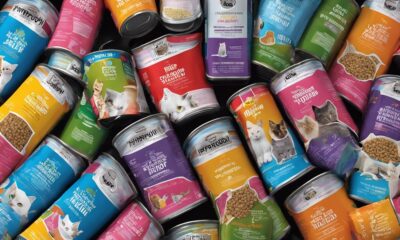
 Vetted1 month ago
Vetted1 month ago15 Best Cat Foods for Managing Hyperthyroidism – Vet Approved and Feline Friendly
-

 Cats7 months ago
Cats7 months agoTop 5 Cat Breeders in Arkansas: A Guide
-

 Animal Facts2 months ago
Animal Facts2 months agoSpring Animals: A Guide to Seasonal Wildlife
-

 Vetted1 month ago
Vetted1 month ago15 Best Fresh Dog Food Delivery Services for Your Pup's Health and Happiness
-
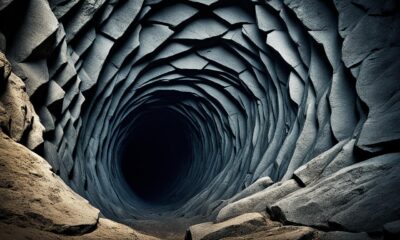
 Rabbits2 months ago
Rabbits2 months agoExploring Rabbit Holes: What Do They Look Like?
-
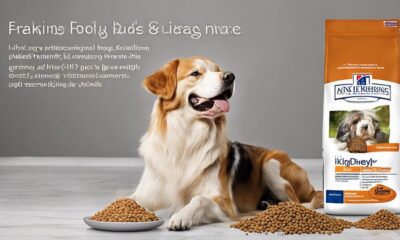
 Vetted1 month ago
Vetted1 month ago15 Best Dog Foods for Kidney Disease – Expert Recommendations for Your Pet's Health
-
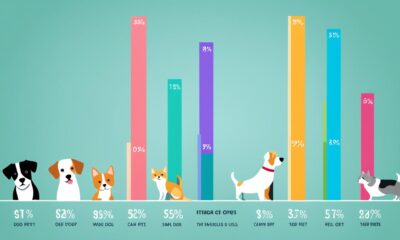
 Pets2 months ago
Pets2 months agoLatest Pet Statistics in US – Trends & Insights in 2024
-

 Fish2 months ago
Fish2 months agoKeeping Your Sucker Fish Thriving at Home
























